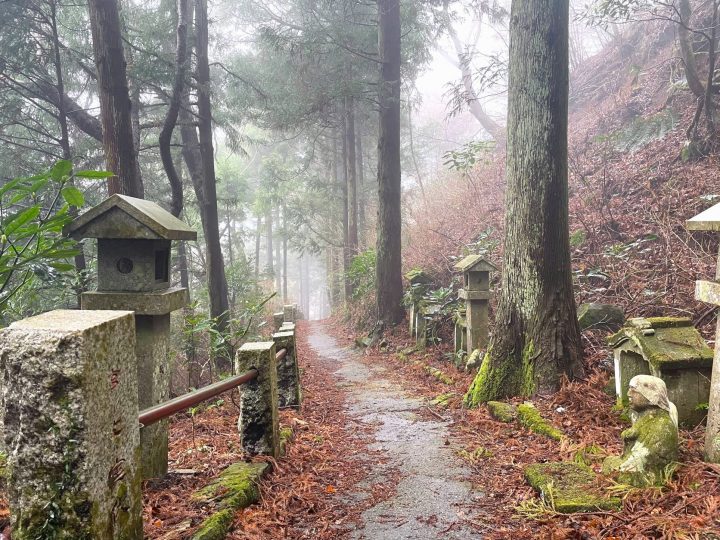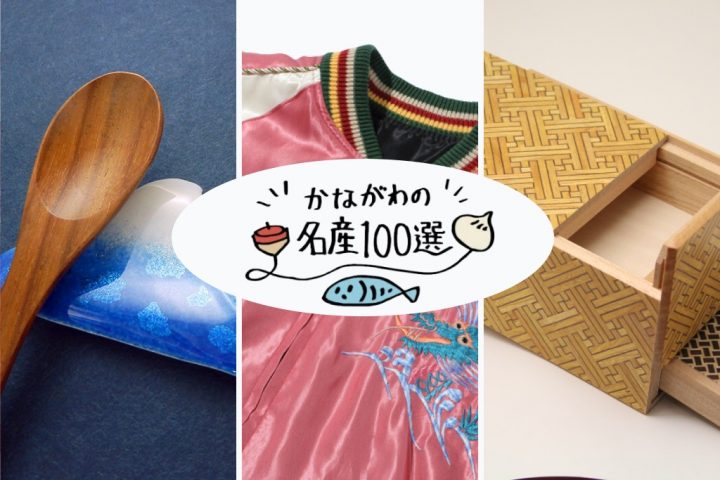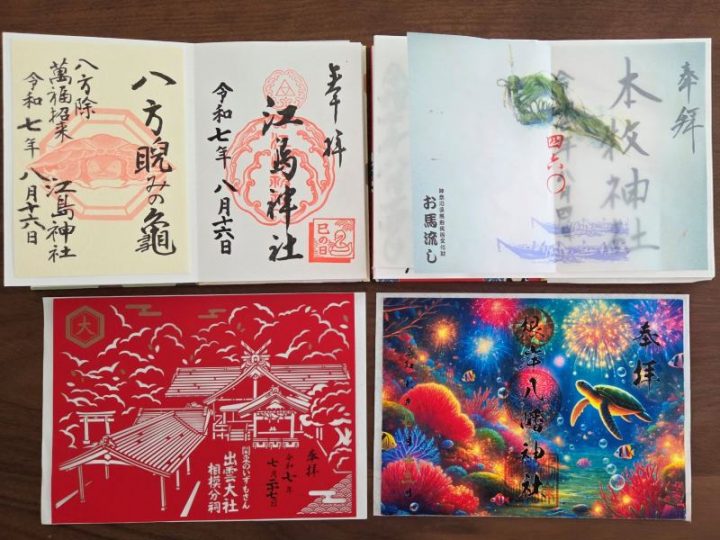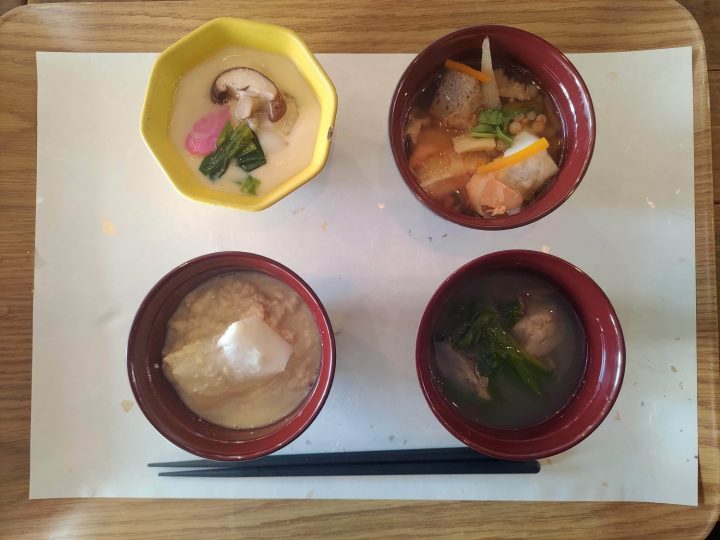9 Places Associated with Historical Figures Who Loved Kanagawa

Kanagawa Prefecture is dotted with places associated with literati and artists.
Kanagawa was a place loved, lived and stayed by many famous historical figures, including the first Prime Minister of Japan, Hirobumi Ito, and postwar Prime Ministers Shigeru Yoshida, Natsume Soseki, and Kitahara Hakushu.
Here we will introduce places associated with famous people who are still living.
Why not rediscover the charm of Kanagawa by visiting places associated with famous people and thinking about those people and the history of the time?
{1} The home of Shigeru Yoshida, a leading postwar politician
[Former Yoshida Shigeru Residence] (Oiso)
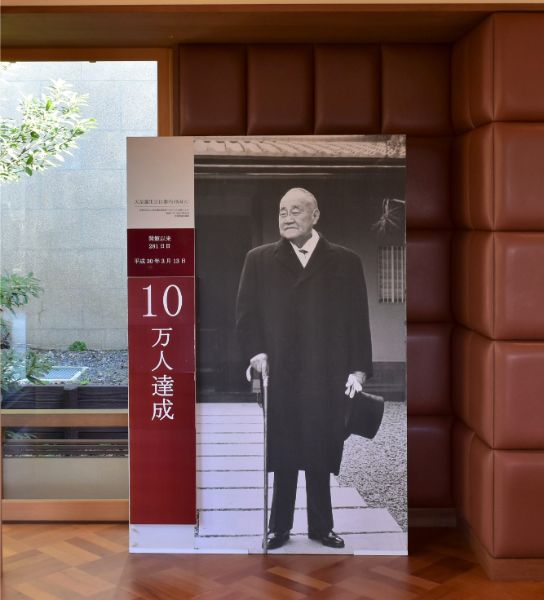
Shigeru Yoshida (life-size)
Shigeru Yoshida is 155cm tall (according to the passport he used when visiting Europe and the United States)
Shigeru Yoshida (1878-1967) was a representative postwar politician who served as a foreign ministry bureaucrat in various positions, including consul, secretary, and ambassador in various foreign countries before the war, and served as Prime Minister for a total of five terms (six years and two months) after the war.
The former Yoshida Shigeru residence (Oiso Town Local History Museum Annex) in Oiso Shiroyama Park was built as a villa in 1884 when Yoshida Shigeru's foster father, Kenzo, purchased the land and built it as a villa where Yoshida lived from around 1945 until his death in 1967. The residence burned down in March 2009, but was subsequently rebuilt and has been open to the public since 2017.
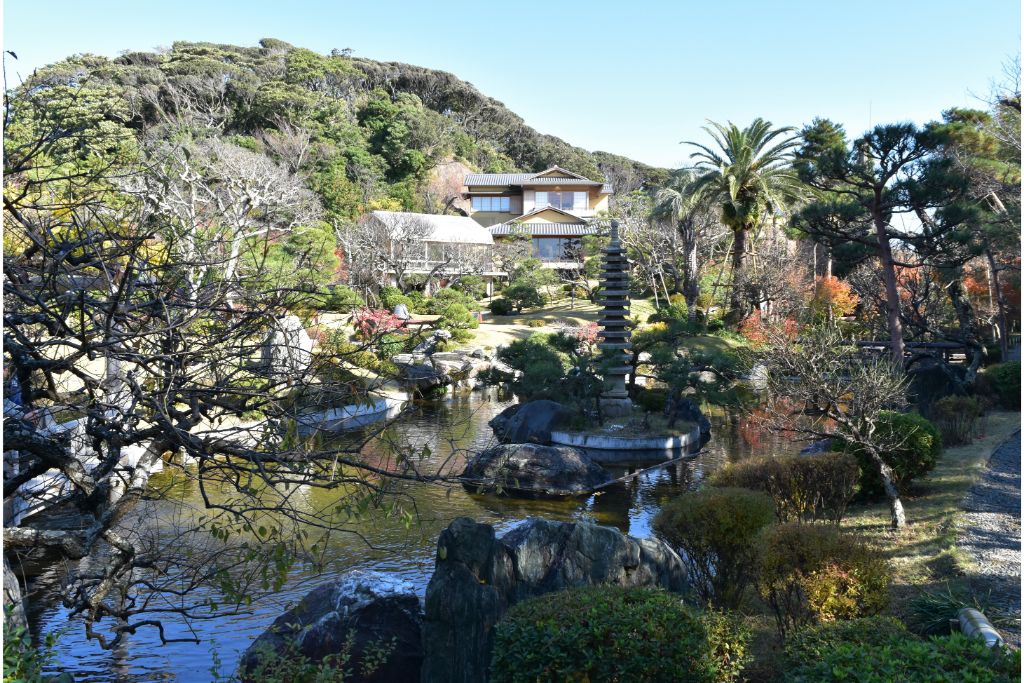
The former Yoshida Shigeru residence as seen from the Japanese garden
entrance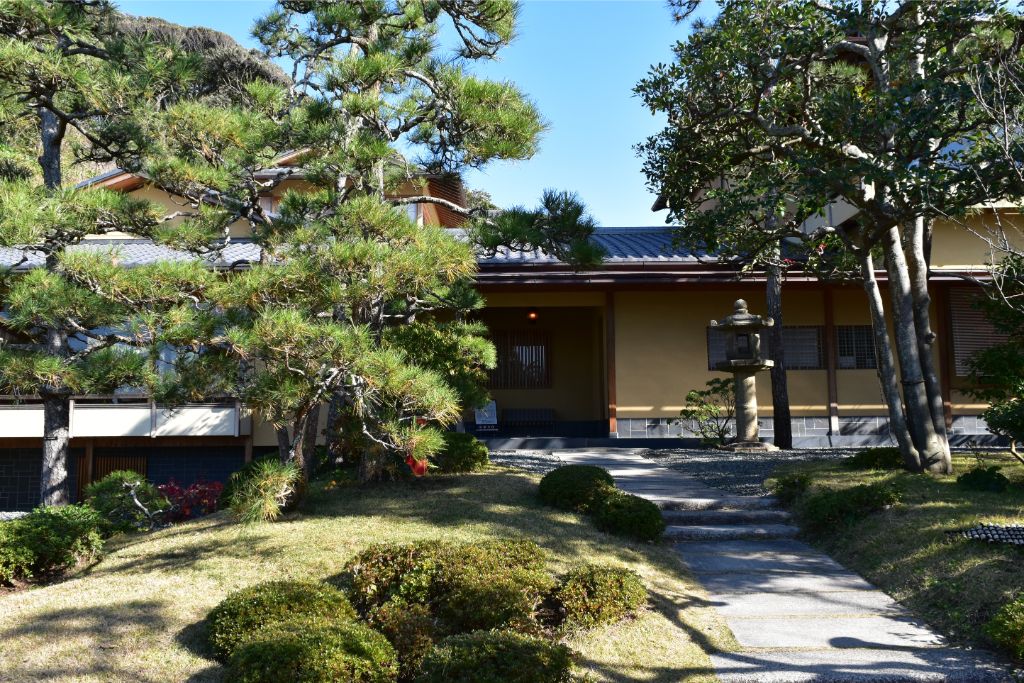
Kaede no Ma (reception room)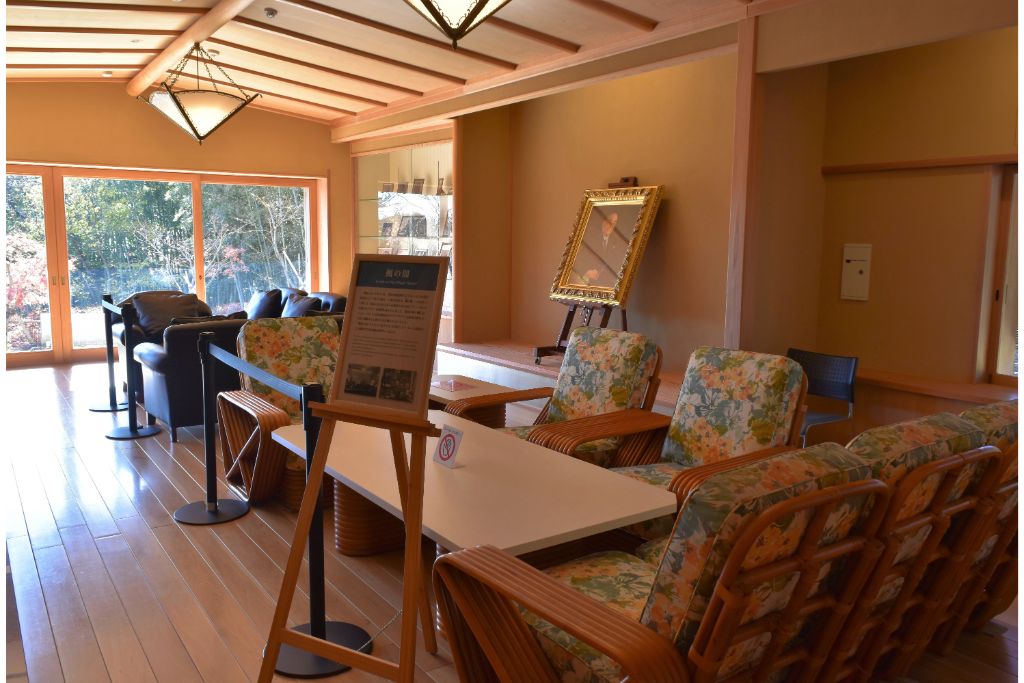
It was used as a reception room and contained Shigeru Yoshida's desk and sofa set.
Exhibition/rest room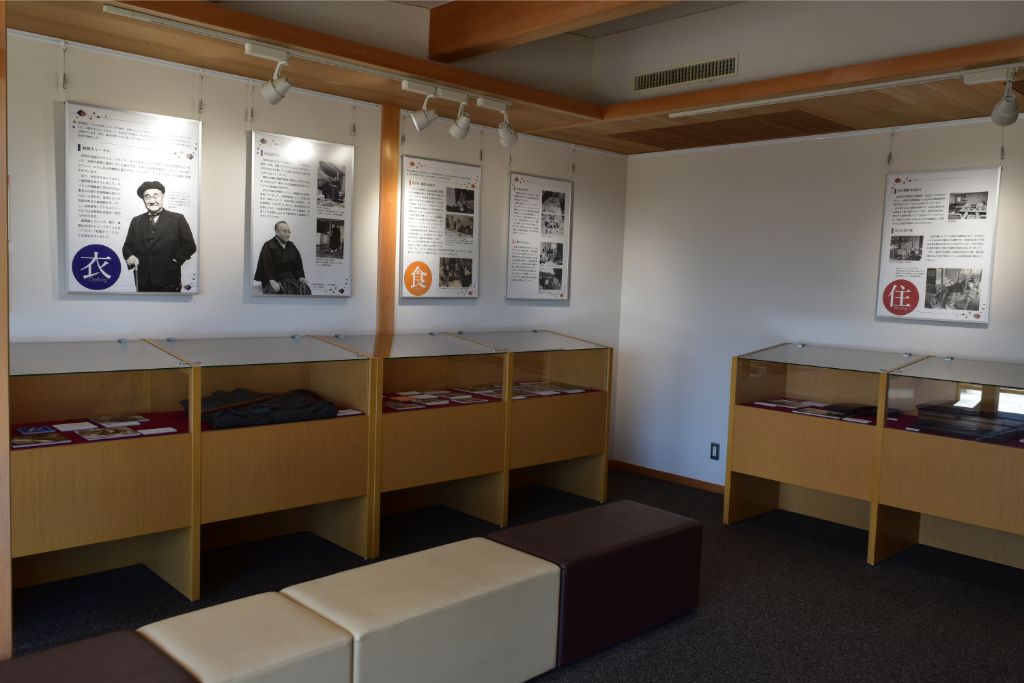
His favorite coat, walking stick, cigar case, documents, etc. are on display.
Shigeru Yoshida was also known as the "Japanese Churchill." His Western attire was British style. His trademarks were suits made in London, England, pince-nez, walking sticks, hats, and cigars.
Golden Room (living room)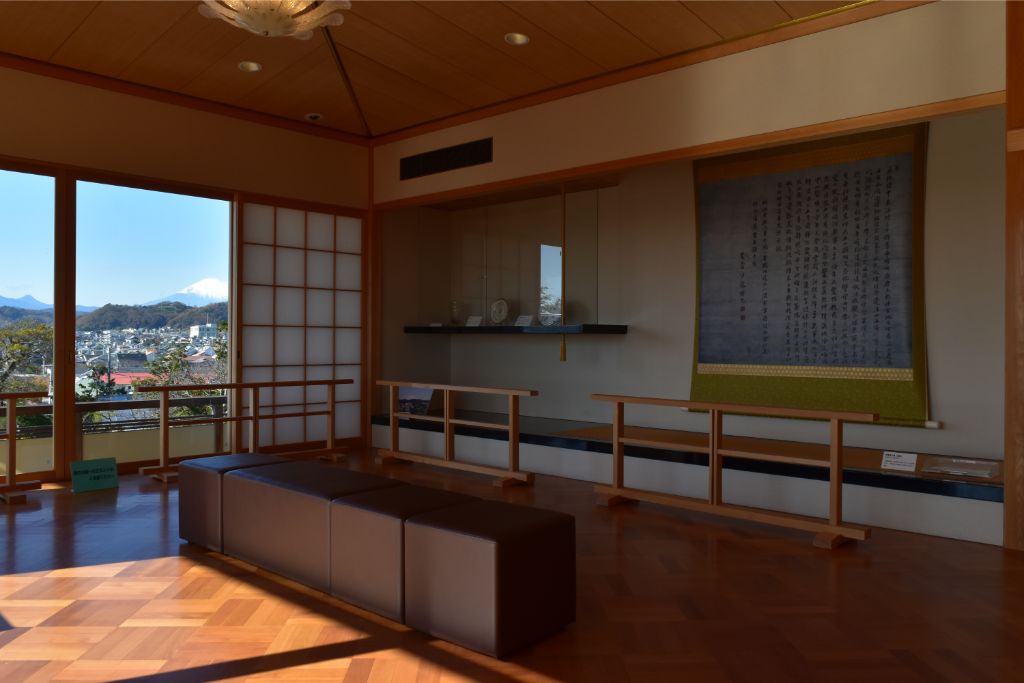
A reception room where guests were entertained. It offers a panoramic view of the Hakone mountains, Mt. Fuji, and Sagami Bay.
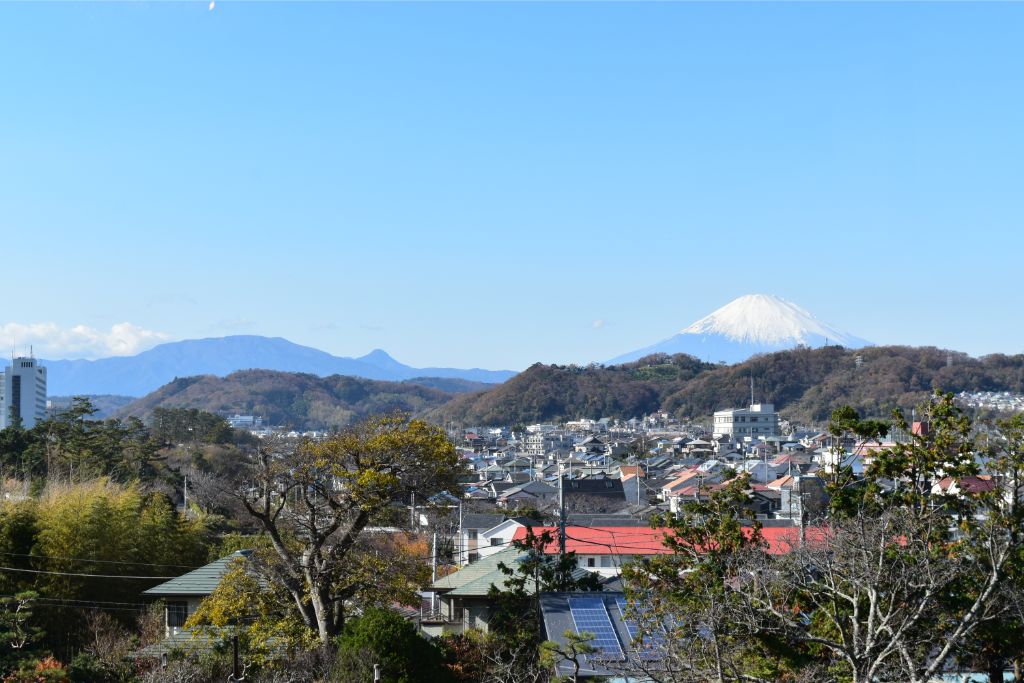
Shigeru Yoshida was so fond of the view of Mount Fuji from this room that he apparently viewed it almost every day.
A nationally registered tangible cultural property located in the area of the former residence of Shigeru Yoshida
The following "Kabutomon Gate," "Sunroom (greenhouse)," and "Shichikendo" escaped fire and are valuable structures that remain in their original form as they were originally built. They were registered as tangible cultural properties of Japan in March 2019.
helmet gate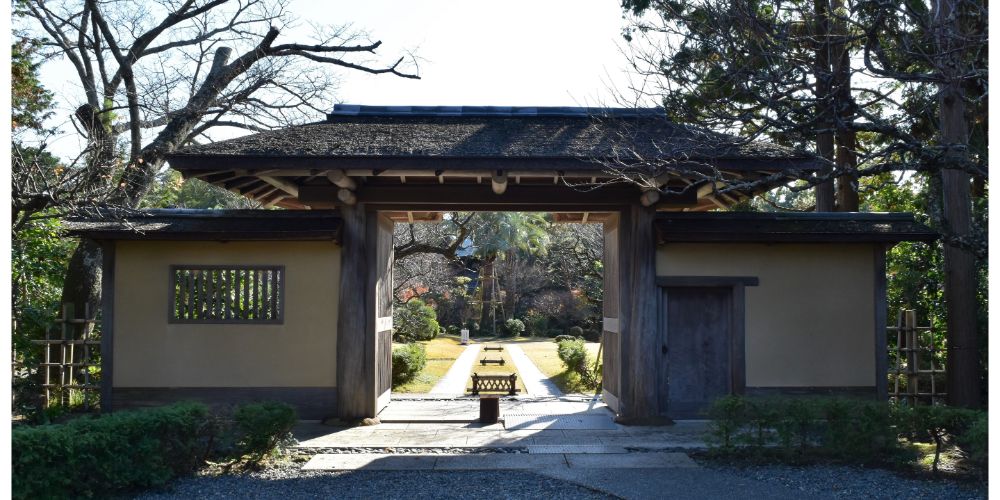 This gate was built to commemorate the signing of the San Francisco Peace Treaty, and is also known as the "Peace Treaty Gate."It is also known as the "Kabuto Gate" because of the curved notch at the eaves that resembles the shape of a helmet.
This gate was built to commemorate the signing of the San Francisco Peace Treaty, and is also known as the "Peace Treaty Gate."It is also known as the "Kabuto Gate" because of the curved notch at the eaves that resembles the shape of a helmet.
Sunroom (greenhouse)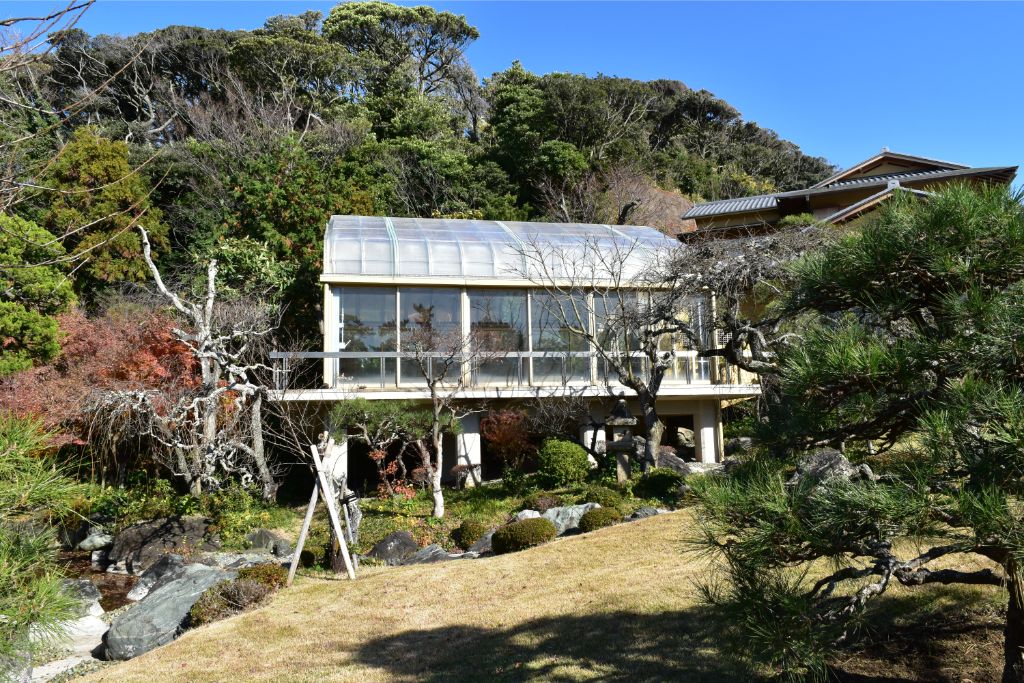 Shigeru Yoshida loved plants, and his sunroom was filled with tropical plants such as bougainvillea.
Shigeru Yoshida loved plants, and his sunroom was filled with tropical plants such as bougainvillea.
Shichikendo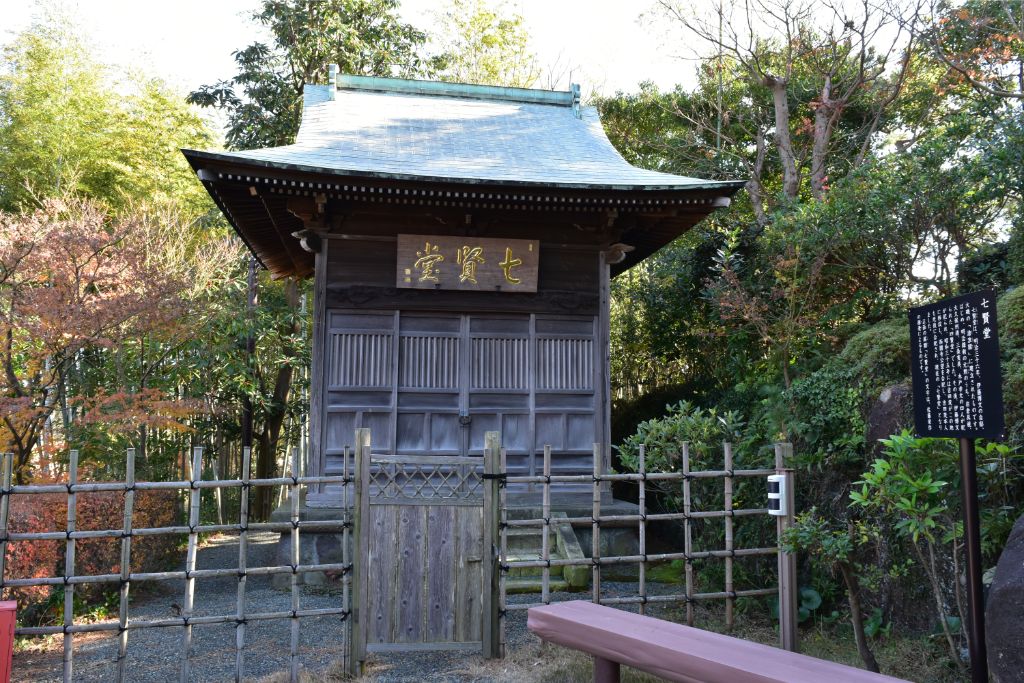 Seven people are enshrined here: Iwakura Tomomi, Okubo Toshimichi, Sanjo Sanetomi, Kido Takayoshi, Ito Hirobumi, Saionji Kinmochi, and Yoshida Shigeru. The plaque on the front, "Shichiken-do," was written by former Prime Minister Sato Eisaku.
Seven people are enshrined here: Iwakura Tomomi, Okubo Toshimichi, Sanjo Sanetomi, Kido Takayoshi, Ito Hirobumi, Saionji Kinmochi, and Yoshida Shigeru. The plaque on the front, "Shichiken-do," was written by former Prime Minister Sato Eisaku.
Shigeru Yoshida Bronze Statue
It faces the United States of America, the site where the San Francisco Peace Treaty was signed in 1951. On a clear day, you can see Izu Oshima, the Izu Peninsula, Sagami Bay, the Boso Peninsula, and more from near the statue.
[Former Yoshida Shigeru Residence (Oiso Town Local History Museum Annex)]
Address: 418 Nishikoiso, Oiso-cho, Naka-gun, Kanagawa Prefecture (within the Prefectural Oiso Castle Park)
TEL: 0463-61-4700
Opening hours: 9:00-16:30 (entry until 16:00)
Closed on Mondays, the 1st of each month (if a holiday, the next weekday), and New Year's holidays (December 29th to January 3rd)
Admission fee: Adults ¥500 (¥450) / Junior and senior high school students ¥200 (¥150) *Until March 2020 *Prices in parentheses are group rates
*After April 1, 2020: Adults ¥510 (¥460) / Junior and senior high school students ¥210 (¥160)
<URL> http://www.town.oiso.kanagawa.jp/oisomuseum/
{2} Named by Hirobumi Ito! Over 100 years of history and visited by famous people from all walks of life
[Motoyu Kansuiro] (Hakone)
Main building exterior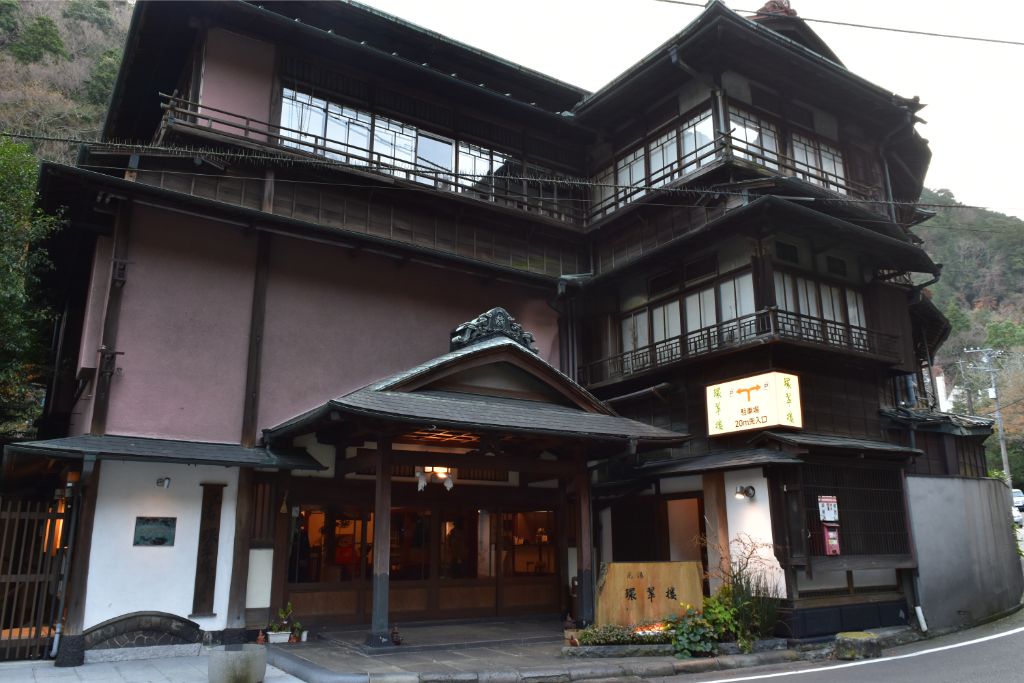
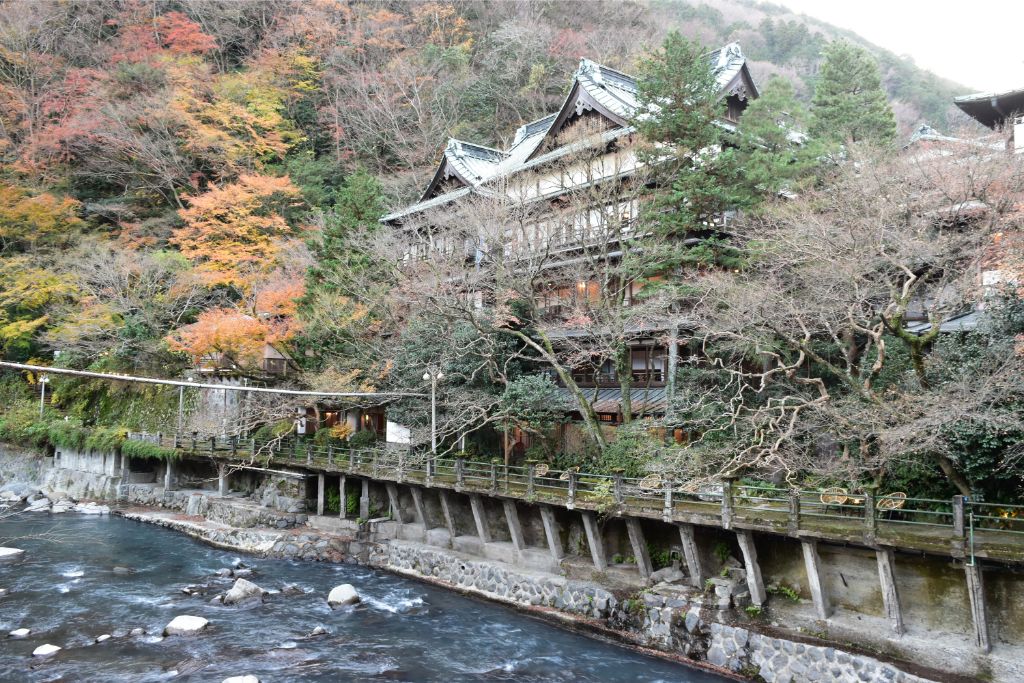
View of the main building from Hayakawa River
Annex exterior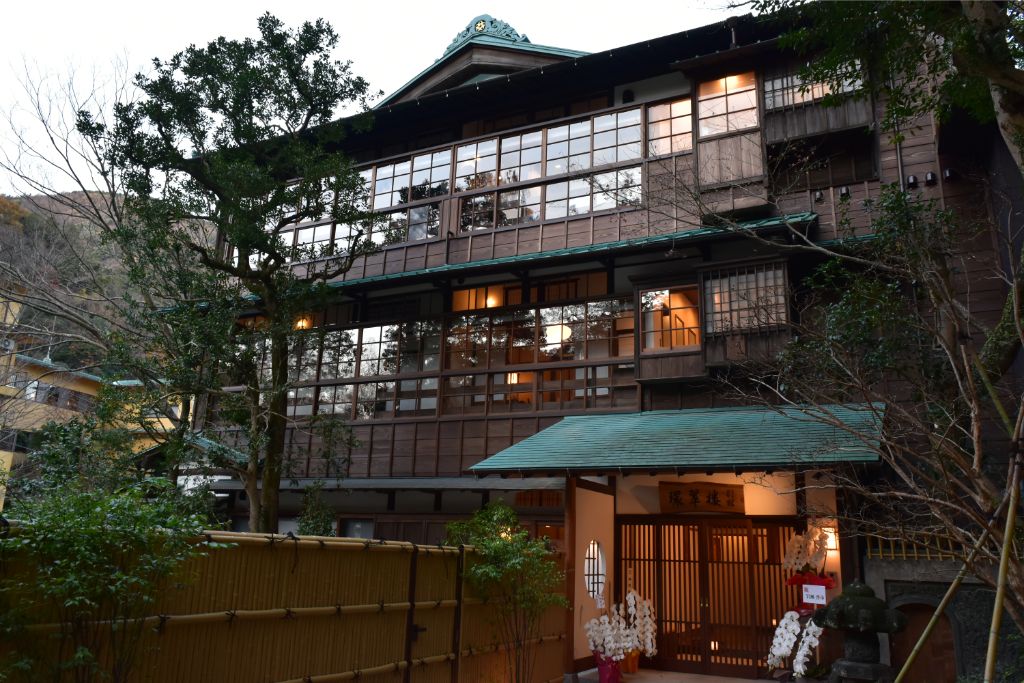
Kansuiro is a historic hot spring inn that first opened as a therapeutic hot spring resort in Tonosawa, Hakone in 1614. Starting with Mito Mitsukuni, who stayed at Kansuiro in the mid-Edo period, many famous people have visited and stayed at Kansuiro, including Princess Kazunomiya and Princess Tenshoin Atsuhime, who were prominent figures in the turbulent end of the Edo period, Hirobumi Ito, Kogoro Katsura, and Heihachiro Togo, who led Japan in the aftermath of the Meiji Restoration, and modern literary figures Soseki Natsume and Toson Shimazaki.
The current buildings consist of a three-story wooden main building built in 1919 and a new four-story building built in 1924. As one of the few wooden high-rise buildings in Japan, it has been designated a National Tangible Cultural Property.
The building has three elegant large halls, all made from fine wood such as cedar, cherry, and paulownia.
Large hall "Jindaikaku"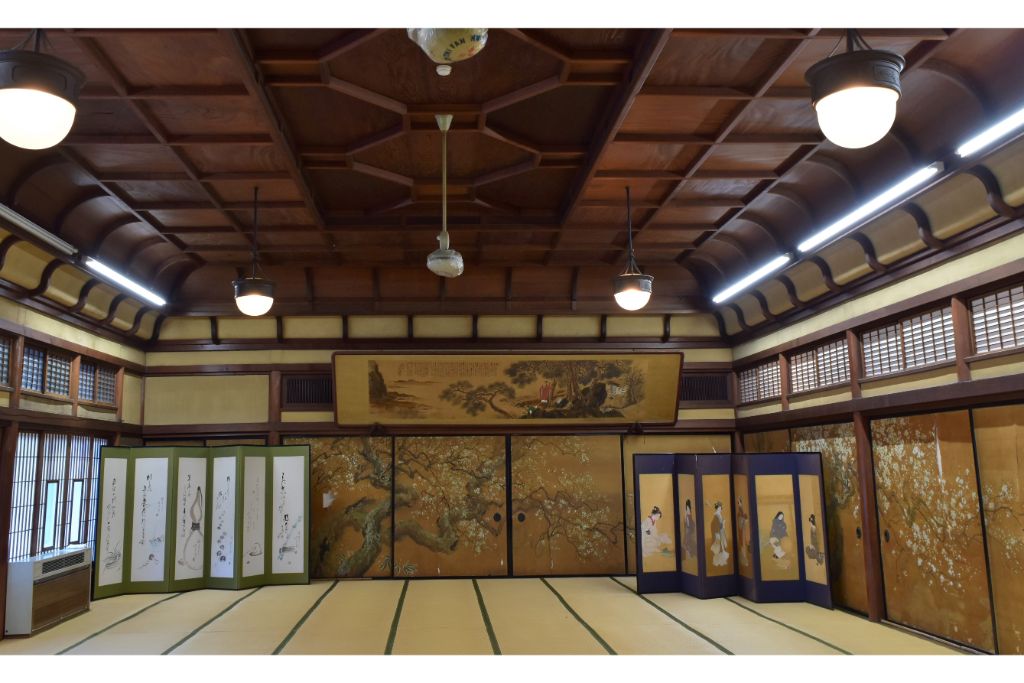
The large hall is made of the finest Jindai cedar* discovered in the mountains of Hakone. The ceiling is a double-folded coffered ceiling.
*Jindai Cedar: Cedar wood that is over several hundred years old and has been buried underground or underwater for over 1,000 years.
The museum also displays famous calligraphy and paintings left by famous people from various fields who visited Kansuiro.
Calligraphy of "Kansuiro" by Hirobumi Ito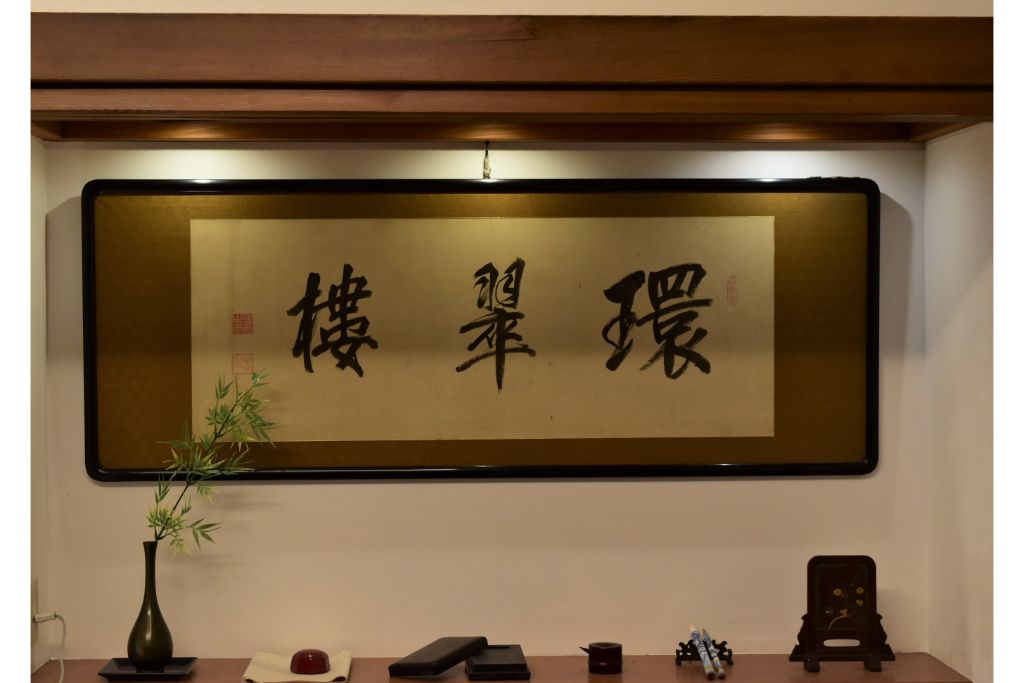
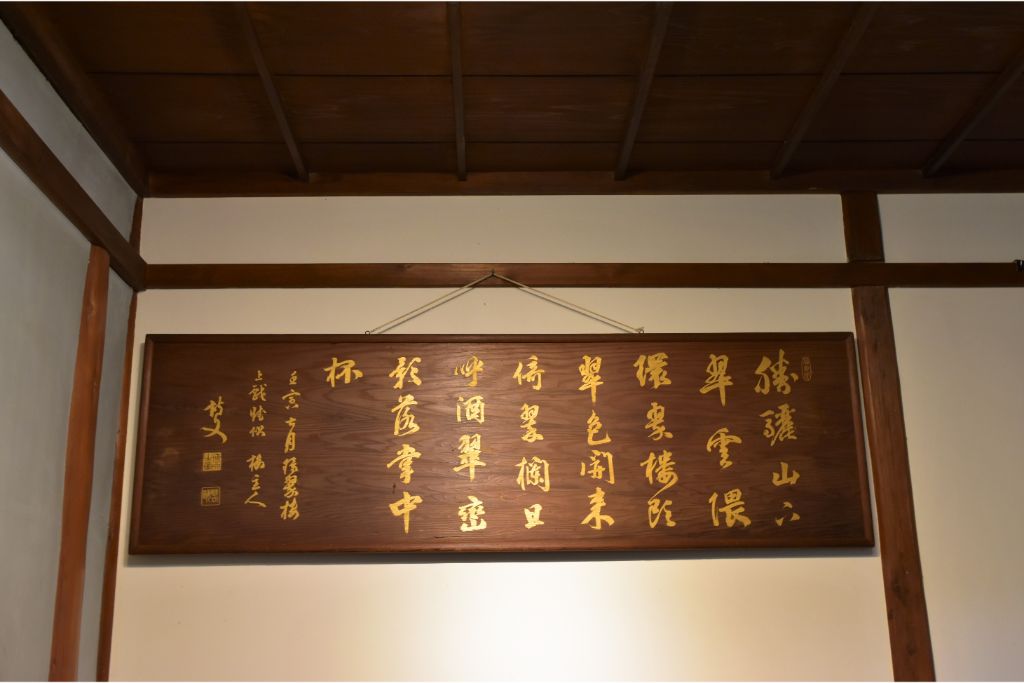 The name "Kansuiro" is said to be derived from the three characters written in a Chinese poem that Ito Hirobumi sent to Suzuki Zenzaemon, the owner of the brothel at the time: "On Mount Shengli, at the corner of green clouds below, the green color of the Kansuiro building opens up, I come to drink from the green lantern, the green reflection falls on the cup in my hand."
The name "Kansuiro" is said to be derived from the three characters written in a Chinese poem that Ito Hirobumi sent to Suzuki Zenzaemon, the owner of the brothel at the time: "On Mount Shengli, at the corner of green clouds below, the green color of the Kansuiro building opens up, I come to drink from the green lantern, the green reflection falls on the cup in my hand."
Furnishings related to Princess Kazunomiya, the last empress of the Edo period (three-leaf hollyhock crest)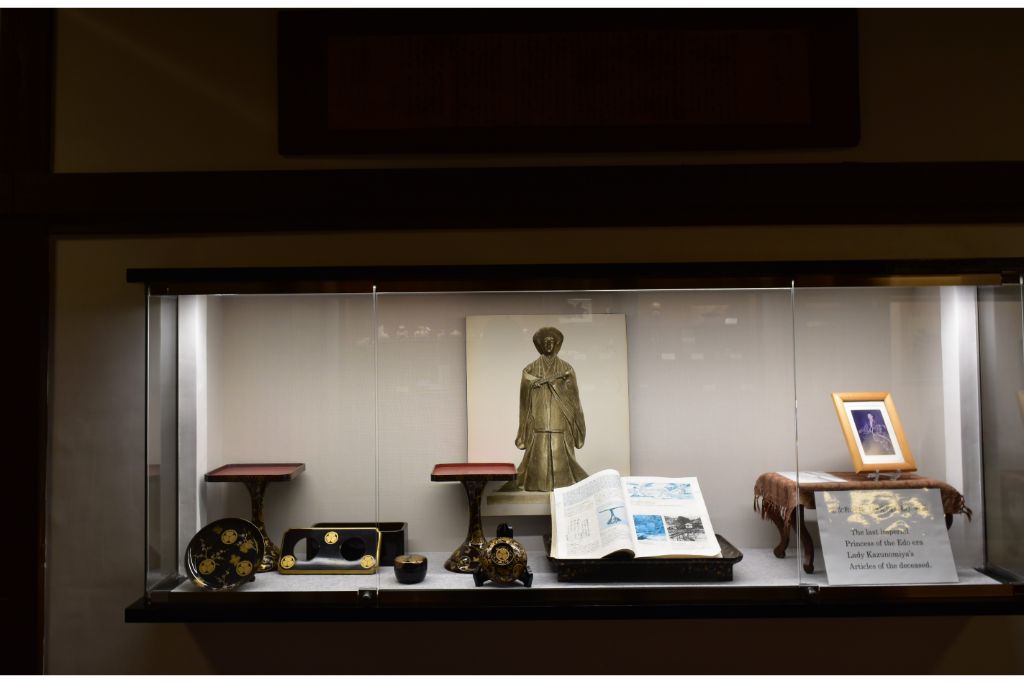 Princess Seikan'in (1846 - 1877) stayed in the building to recuperate from illness. She later passed away. The furnishings associated with her are marked with the three-leaf chrysanthemum crest. Tenshoin (Atsuhime), the wife of the 13th Shogun, stayed in the building around 1880, saying she wanted to visit Kansuiro, where Princess Kazunomiya passed away. It is said that she cried bitterly as she gazed upon the flowing Hayakawa River, thinking of the late Princess Kazunomiya.
Princess Seikan'in (1846 - 1877) stayed in the building to recuperate from illness. She later passed away. The furnishings associated with her are marked with the three-leaf chrysanthemum crest. Tenshoin (Atsuhime), the wife of the 13th Shogun, stayed in the building around 1880, saying she wanted to visit Kansuiro, where Princess Kazunomiya passed away. It is said that she cried bitterly as she gazed upon the flowing Hayakawa River, thinking of the late Princess Kazunomiya.
The room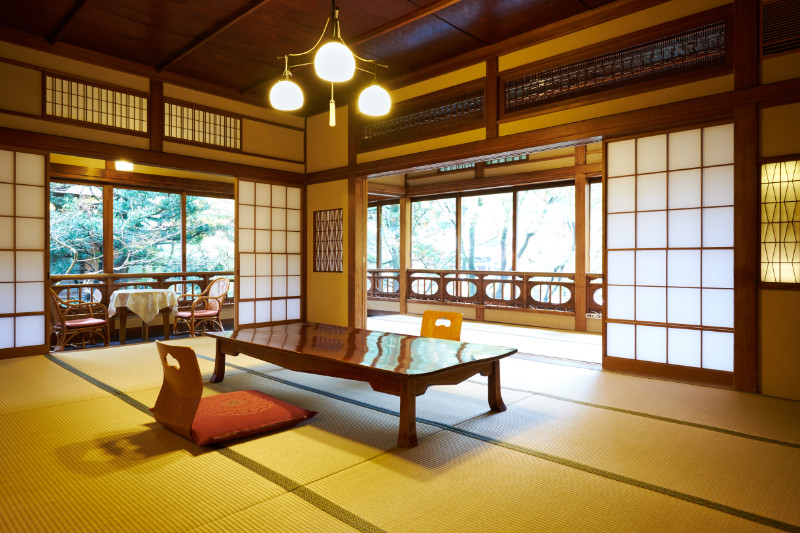
(Image provided by) Motoyu Kansuiro
The rooms range from traditional style rooms that make generous use of precious wood to rooms with open-air baths. The rooms are full of character and emotion, showcasing the craftsmanship and attention to detail of the artisans, and have the atmosphere of good old Japanese architecture.
Taisho bath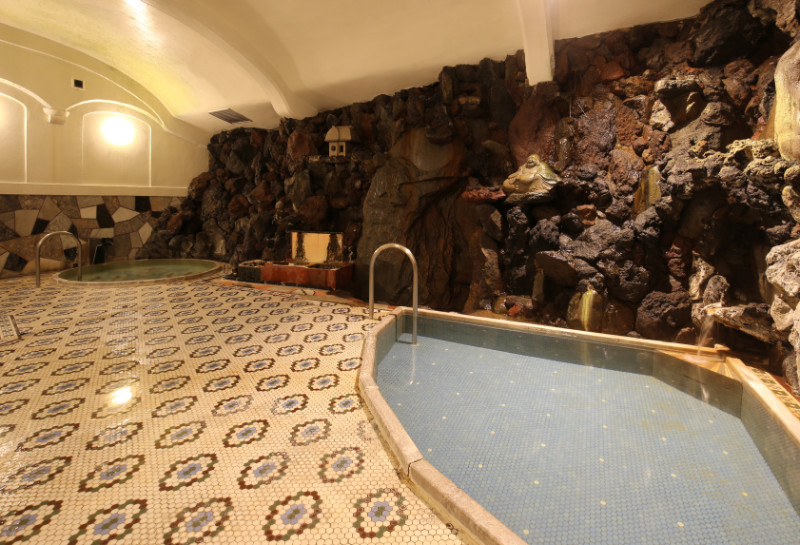
(Image provided by) Motoyu Kansuiro
The hot spring is 100% natural and free-flowing, with a pH of 8.9, making it a high-quality alkaline spring that is gentle on the skin and warms the body to the core. Other facilities include an open-air bath, a private bath, and a rock bath called a healing stone spa.
Kaiseki-style cuisine (example)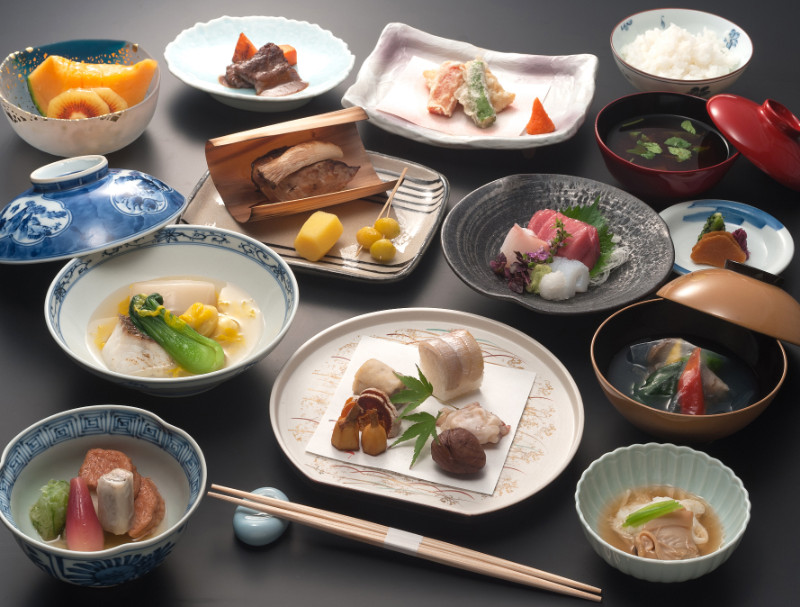
(Image provided by) Motoyu Kansuiro
The cuisine is kaiseki-style cuisine that changes monthly and makes generous use of produce from the mountains of Hakone and the seas of Sagami Bay and Odawara.
[Kansuiro]
Address: 88 Tonosawa, Hakone-machi, Ashigarashimo-gun, Kanagawa Prefecture
TEL: 0460-85-5511
<URL> https://www.kansuiro.co.jp/
3. The villa built by Hirobumi Ito, who loved the beautiful scenery
[Former Kanazawa Villa of Hirobumi Ito] (Kanazawa Ward, Yokohama City)
Front entrance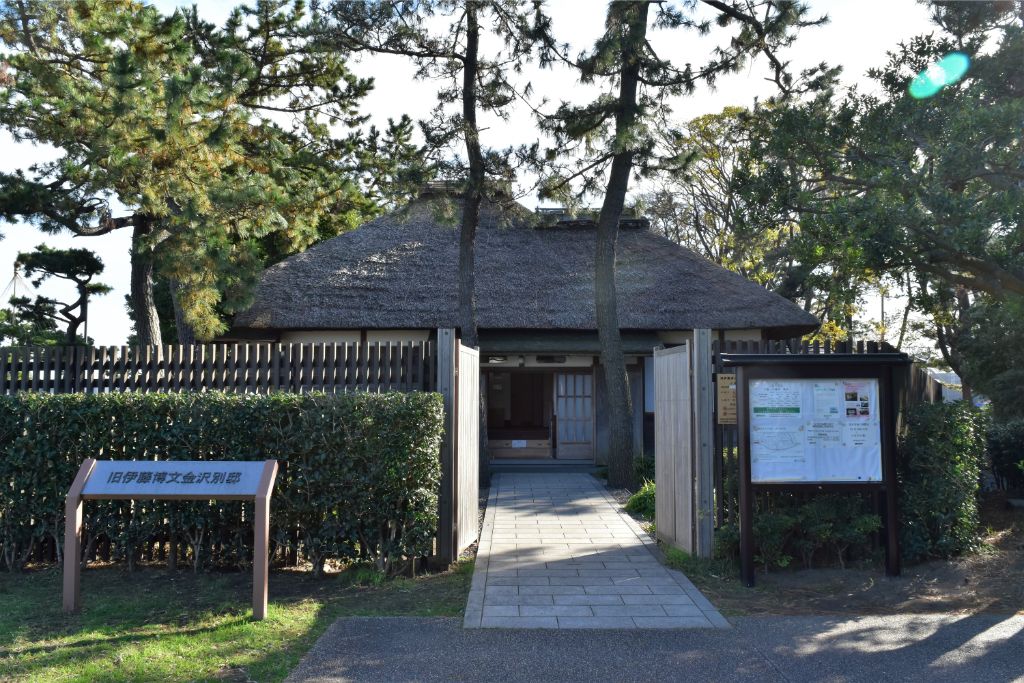
The former Ito Hirobumi Kanazawa Villa, located within Nojima Park , is a rustic seaside villa with a thatched hipped roof that was built in 1898 by Ito Hirobumi, the first Prime Minister of Japan, who played a major role in the dawn of constitutional politics, including drafting the Constitution of the Empire of Japan. It is said that Ito Hirobumi built his villa in Kanazawa, which is scenic and resembles his hometown of Yamaguchi, and has been visited by Emperor Taisho and the Crown Prince of Korea, among others.
In November 2006, it was designated a Yokohama Tangible Cultural Property, but due to the building's deterioration, it was demolished and surveyed in 2007, and a decision was made to restore it to its original appearance, including the parts that no longer exist.
Inside the mansion, many documents and furnishings related to Ito Hirobumi are on display, allowing visitors to learn more about his achievements and the person he was.
exterior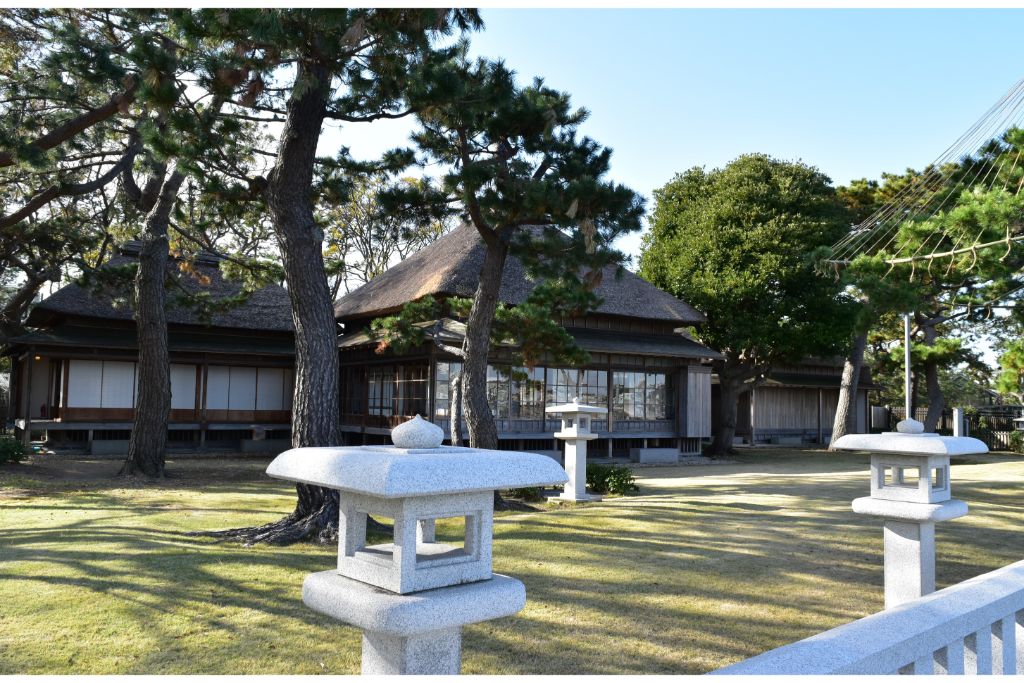
It consists of three buildings: a guest room, a living room, and a kitchen. The formal guest room juts out in a position that commands a good view of the ocean, and the other buildings are connected by corridors in a formation known as 'ganko'.
[Guest room (formal guest room)]
The guest room was used when the Emperor, Crown Prince, and other members of the Imperial family visited the residence.
Tatami-floored corridor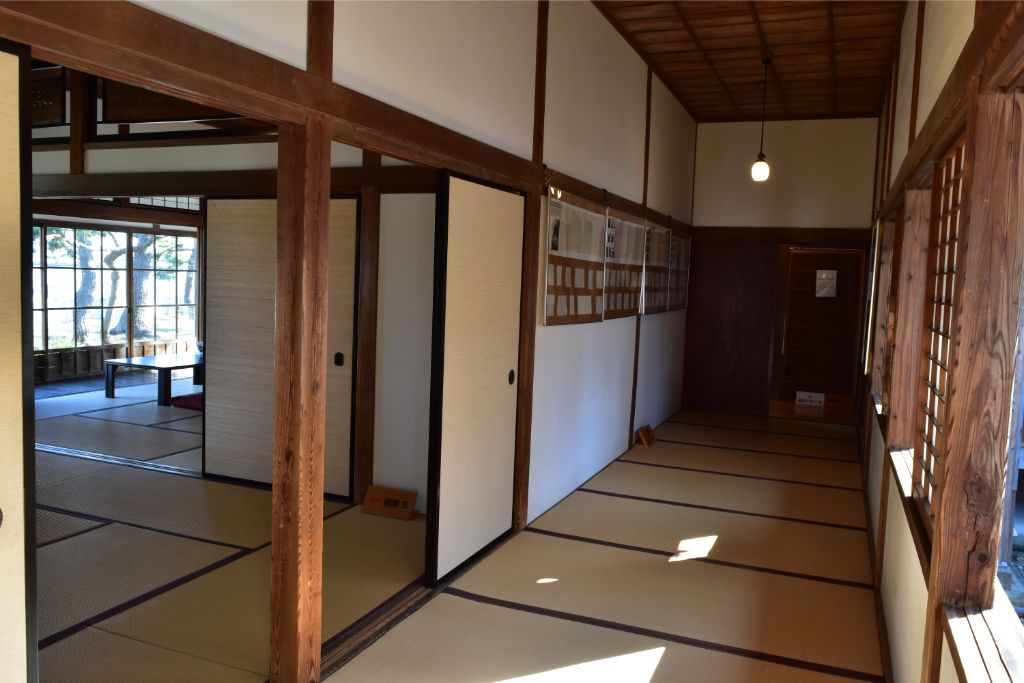
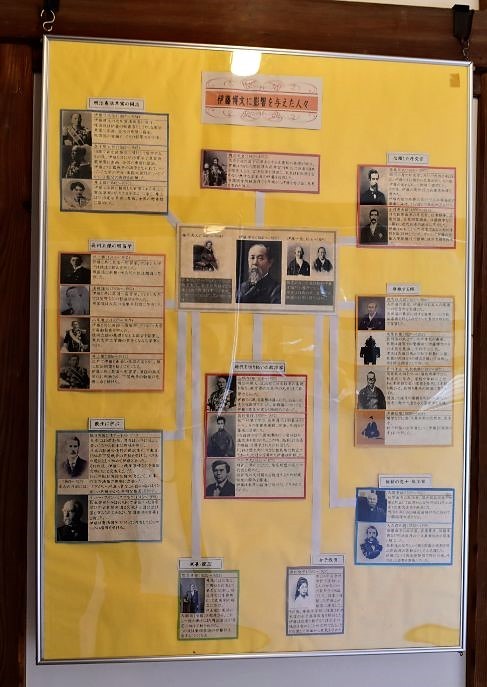
Chronology and historical facts are displayed on the walls.
guest toilet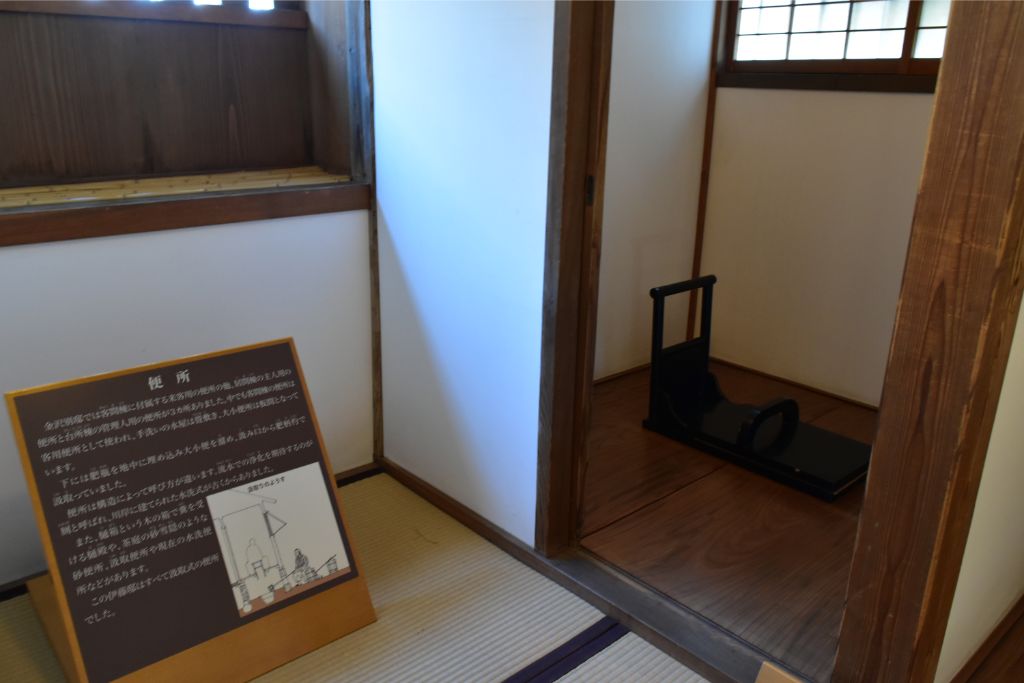
Wooden toilet with genuine lacquer finish (urinal also with genuine lacquer finish)
The inside is wooden-floored, and the hand-washing room is tatami-floored. The toilet used by Prince Hirobumi was in the living room, a private space, and the toilet was simply made of wood.
Seiran Room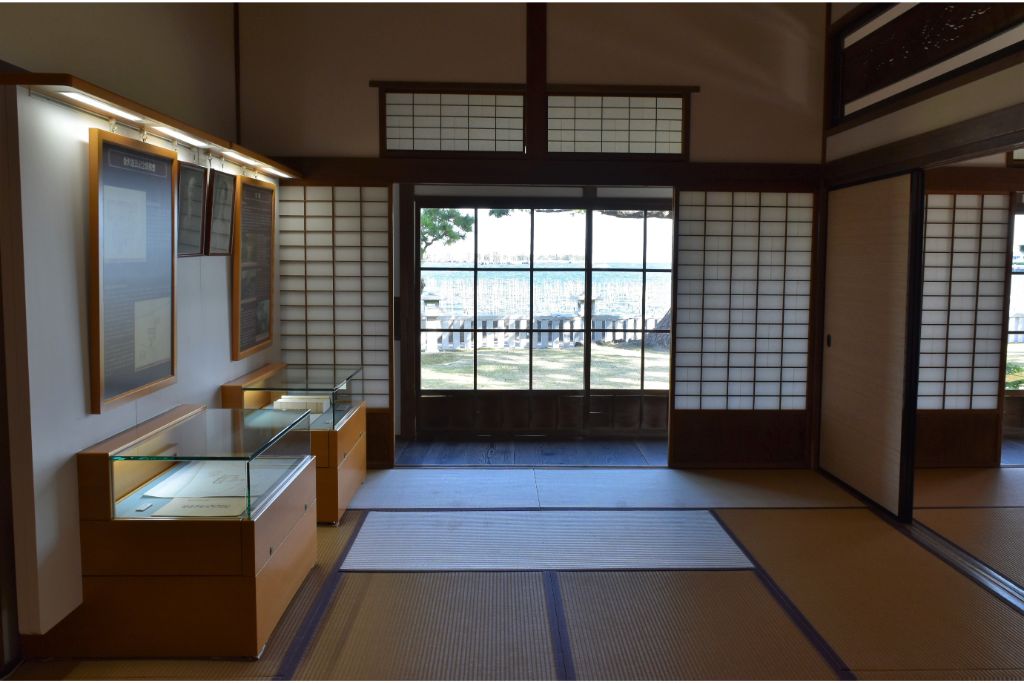
The plate glass used in the glass doors of the guest room wing was shipped from Belgium because it could not be produced in Japan at the time of the building's construction. Even now, you can see the distortions and air bubbles that are characteristic of hand-blown glass.
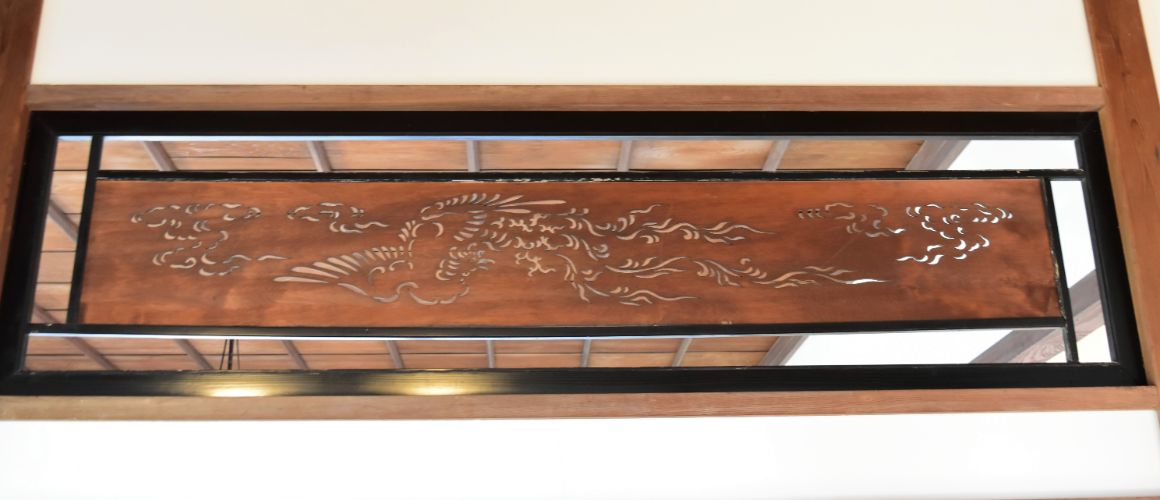 A wooden transom with phoenix carvings has been passed down since the temple was first built.
A wooden transom with phoenix carvings has been passed down since the temple was first built.The Returning Sail Room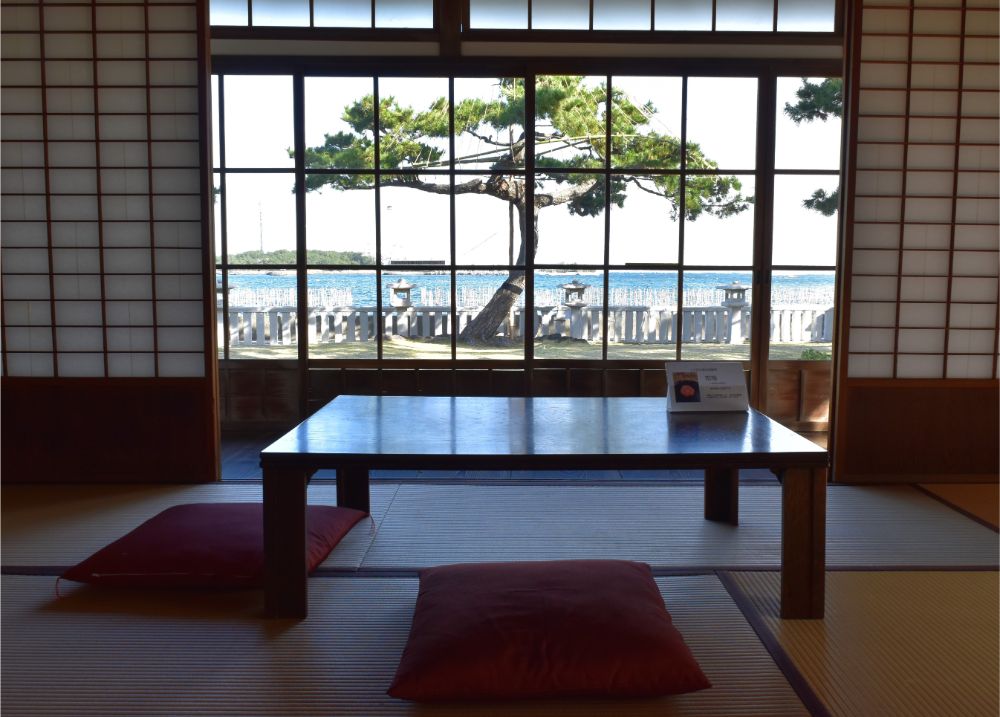 The area around the building is filled with pine trees from the Meiji period, creating a serene and beautiful landscape that you'll want to gaze upon forever.
The area around the building is filled with pine trees from the Meiji period, creating a serene and beautiful landscape that you'll want to gaze upon forever.
Handwritten calligraphy by Hirobumi Ito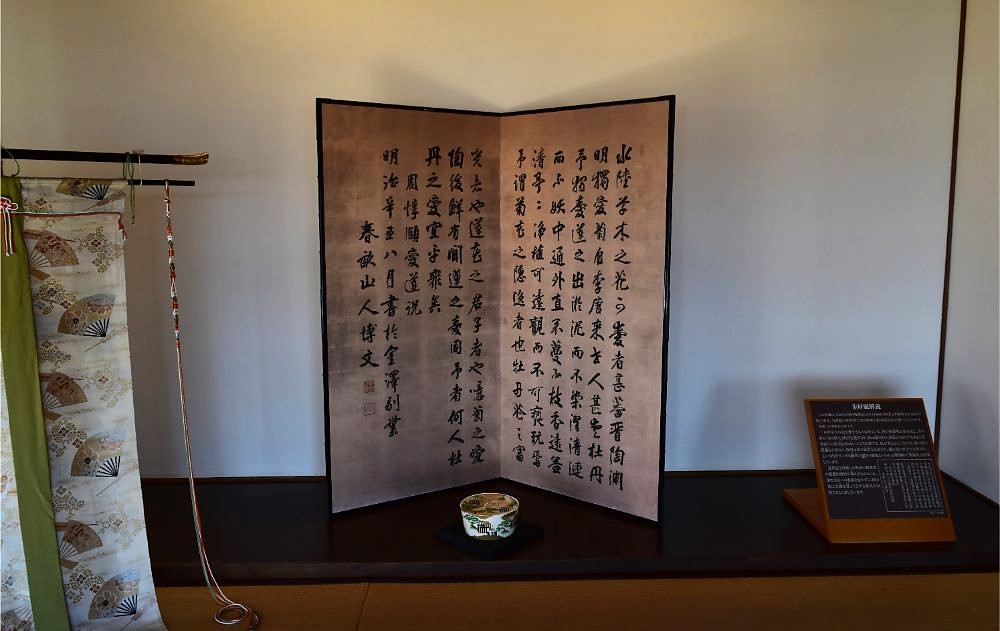 The gold folding screen placed in the alcove was painted by Ito Hirobumi in Kanazawa. "Shunbo" is Hirobumi's pen name. The comparison of the lotus as a gentleman's flower embodies Ito Hirobumi's sincerity to his country.
The gold folding screen placed in the alcove was painted by Ito Hirobumi in Kanazawa. "Shunbo" is Hirobumi's pen name. The comparison of the lotus as a gentleman's flower embodies Ito Hirobumi's sincerity to his country.
[Living room wing (Private space including Prince Hirobumi's study and bedroom)]
The living room's name was taken from Hiroshige Utagawa's ukiyo-e print "Kanazawa-e (Hakkei Kanazawa)."
Shugetsu Room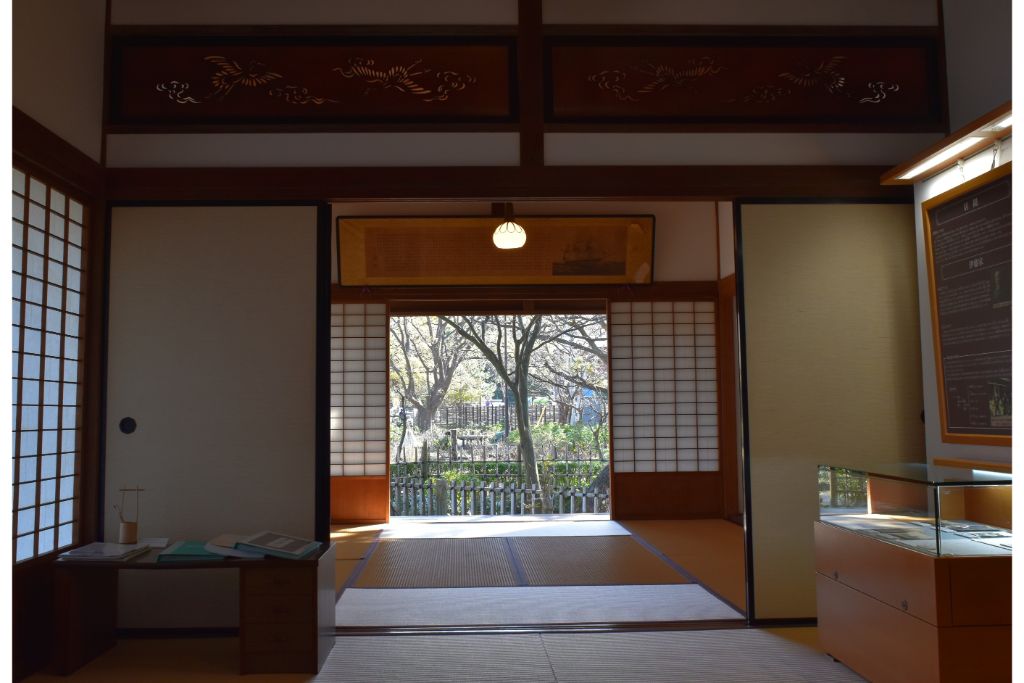
Looking into the evening light
The "Akizuki Room" comes from "Seto Shugetsu"
"The Evening Light Room" is from "Evening Light on Nojima Island"
bathroom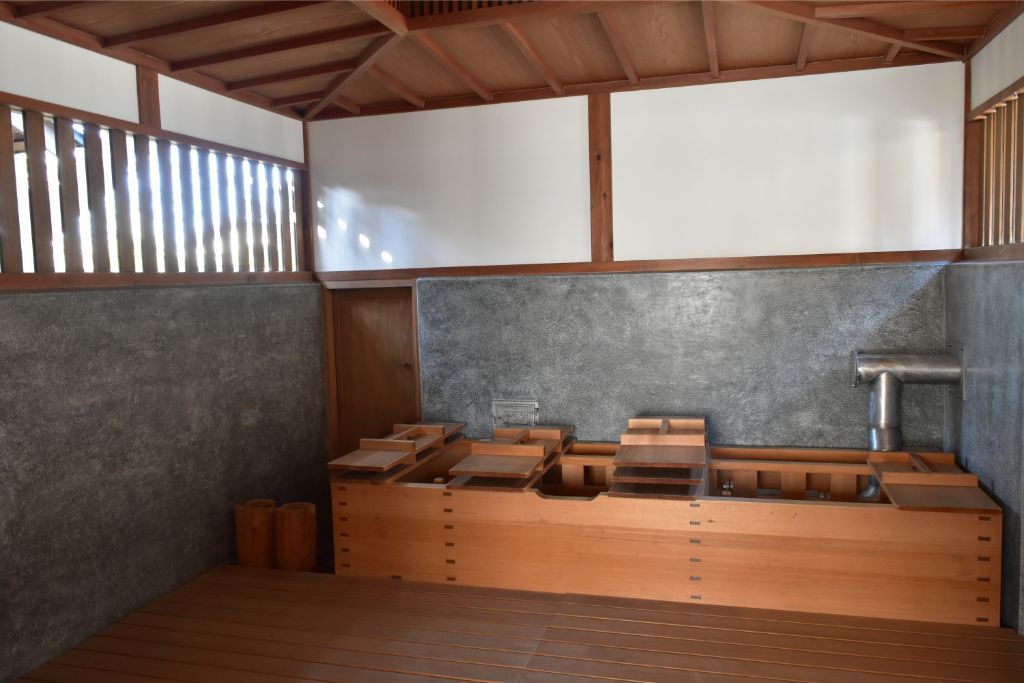
Guests to the house also use the box bath made from sawara wood.
Peony garden
Every year from mid-April to early May, the Kanazawa flower, the peony, blooms in full glory in the garden. Events are also held to coincide with the blooming of the flowers.
[Former Kanazawa Villa of Hirobumi Ito (inside Nojima Park)]
Address: 24 Nojimacho, Kanazawa-ku, Yokohama, Kanagawa Prefecture (inside Nojima Park)
TEL: 045-788-1919
Opening hours: 9:30-16:30 (Peony Garden: 9:00-17:00)
*Until 17:30 in April and May (Peony Garden: 9:00-18:00) *Until 15:30 in December and January (Peony Garden: 9:00-16:00)
Closed on the 1st and 3rd Monday of each month (or the following day if Monday is a holiday)
*Open every day in April and May *Every Monday in December and January (or the following day if Monday is a holiday)
* New Year's holiday (December 29th - January 3rd)
Admission: Free
<URL> http://www.hama-midorinokyokai.or.jp/park/nojima/hakubuntei/
[There's more! Places associated with famous people]
(4) It was called the "inner chamber of the Meiji political world."
[Meiji Memorial Oiso Garden] (Oiso)
Oiso was known as the "inner retreat of Meiji politics" because many important figures in Meiji politics gathered there and built villas and mansions, including eight former prime ministers during the Meiji period, including Hirobumi Ito, Aritomo Yamagata, and Shigenobu Okuma.
The Oiso Garden includes the former residence of the first Prime Minister of Japan, Hirobumi Ito, called Sorokaku, as well as the former villas of Shigenobu Okuma, Kinmochi Saionji, and Munemitsu Mutsu.
*Currently closed to the public. In the summer of 2020, the former villa of Mutsu Munemitsu and the gardens of the former villa of Okuma Shigenobu are scheduled to be open to the public.
Former Sorokaku (former residence of Hirobumi Ito, former villa of the Yi royal family)
(Photo courtesy of Oiso Town Local History Museum)
Hirobumi Ito moved his villa from Odawara in 1896 and named it "Sorokaku." The building was rebuilt after the Great Kanto Earthquake, but both the Western-style and Japanese-style buildings remain as they were at the time. As a representative building of the villa area of Oiso, it has been designated as a tangible cultural property by the town.
*The former Sorokaku, which was the main residence of the Ito family, was transferred to the Yi royal family in 1920 after Hirobumi's death. It was later destroyed in a major earthquake and rebuilt as a villa for the Yi royal family, who owned it at the time. For this reason, it is referred to as the "site" of Hirobumi Ito's residence.
Sorokaku today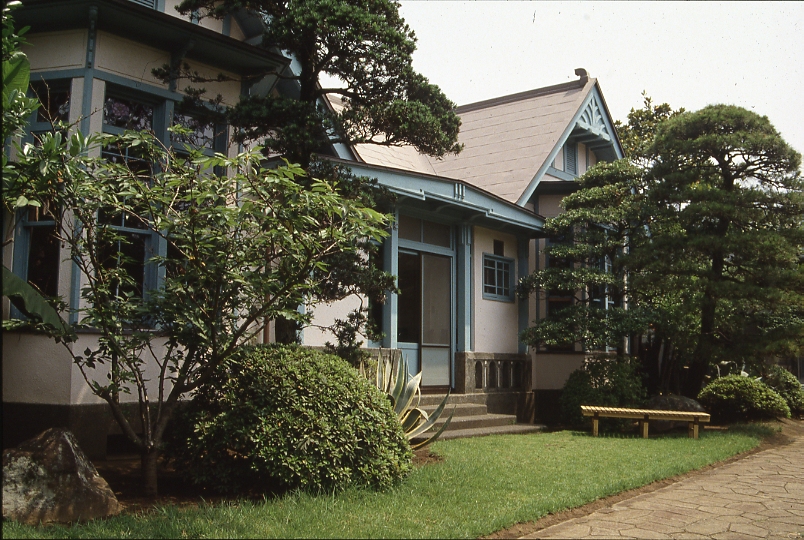
(Photo courtesy of Oiso Town Local History Museum)
Museum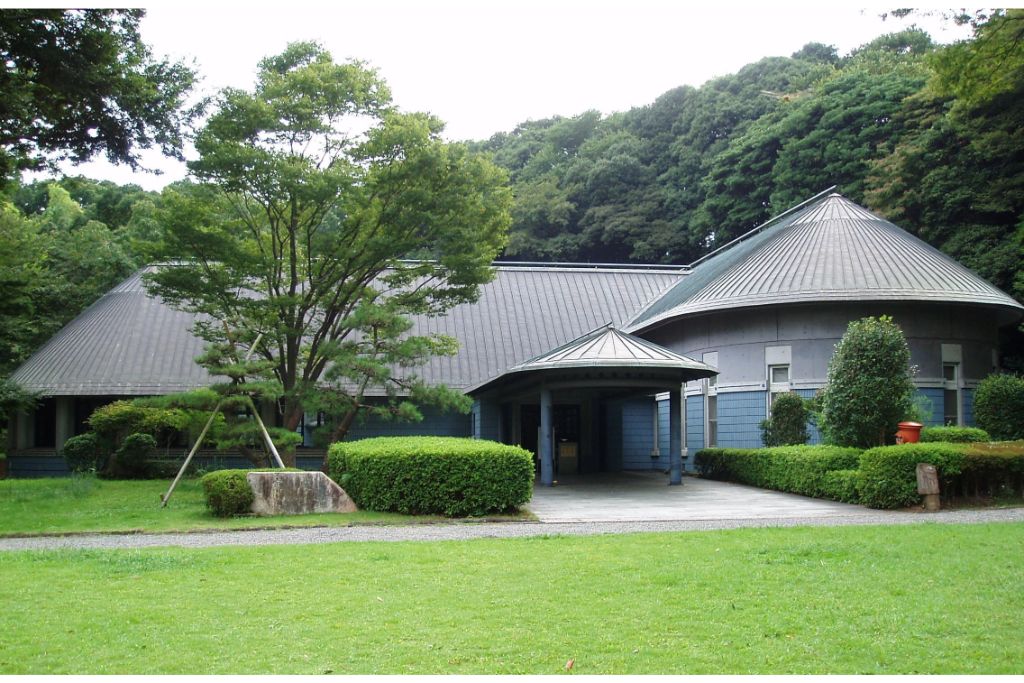
(Photo courtesy of Oiso Town Local History Museum)
Former Okuma Shigenobu Villa and Former Furukawa Villa (exterior)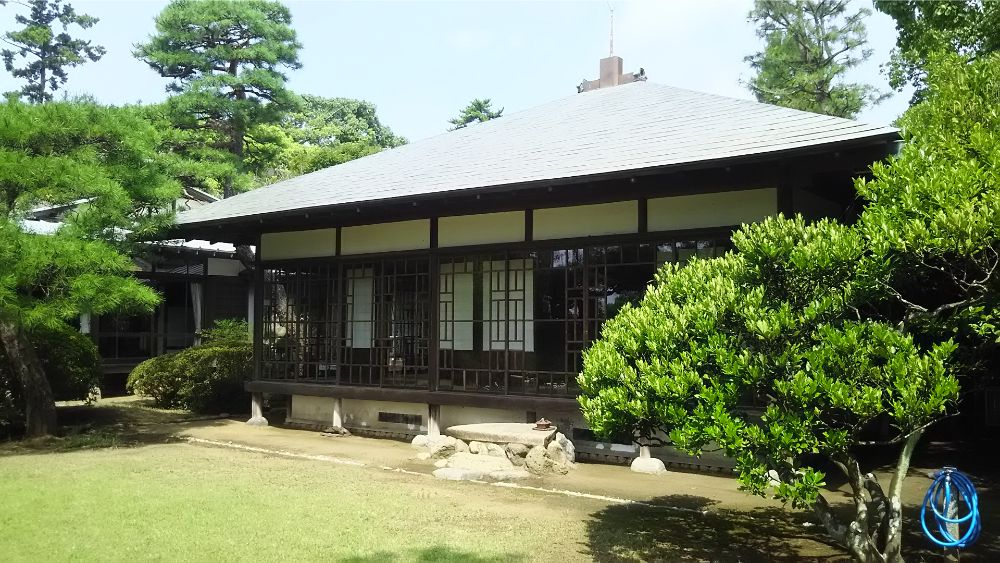 (Photo provided by) Oiso Town Local History Museum
(Photo provided by) Oiso Town Local History Museum
Former Okuma Shigenobu Villa and Former Furukawa Villa (Kamiyo Room)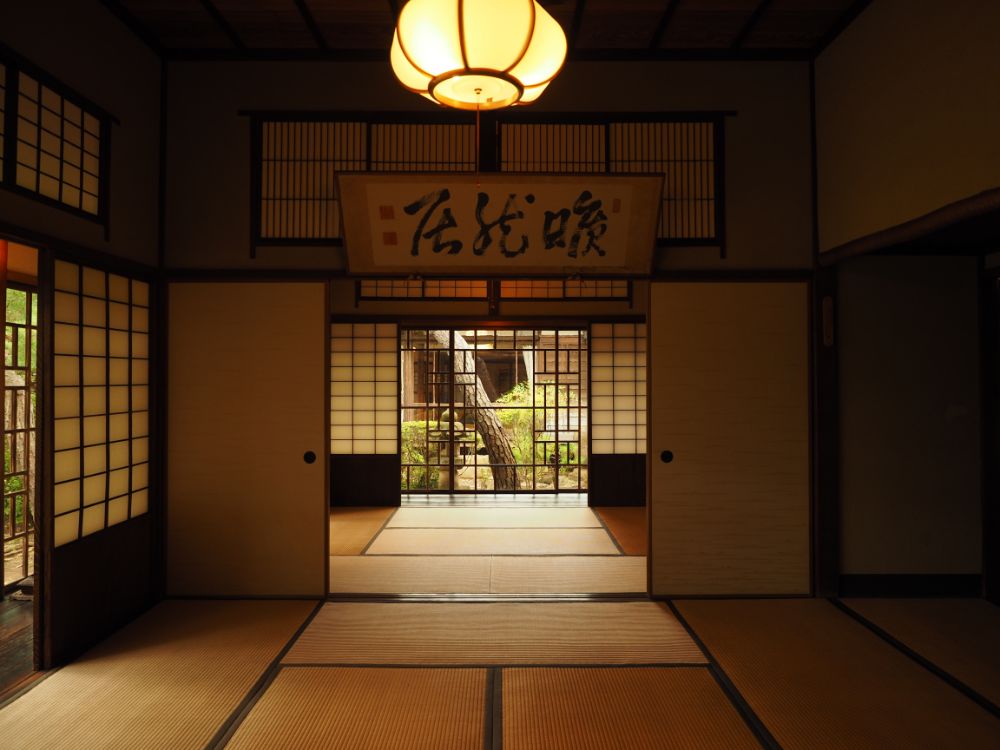 (Photo provided by) Oiso Branch of the National Showa Memorial Park Office
(Photo provided by) Oiso Branch of the National Showa Memorial Park Office
Okuma Shigenobu (1838-1922) served as Prime Minister in 1898 and 1914 , formed Japan's first party cabinet, and founded Waseda University.
*The mansion that Okuma purchased in 1897 survived the earthquake and has been left in its original state with almost no traces. It was later sold to the Furukawa family and maintained as a second home.
The former villa of Mutsu Munemitsu and the Japanese garden at the former Furukawa villa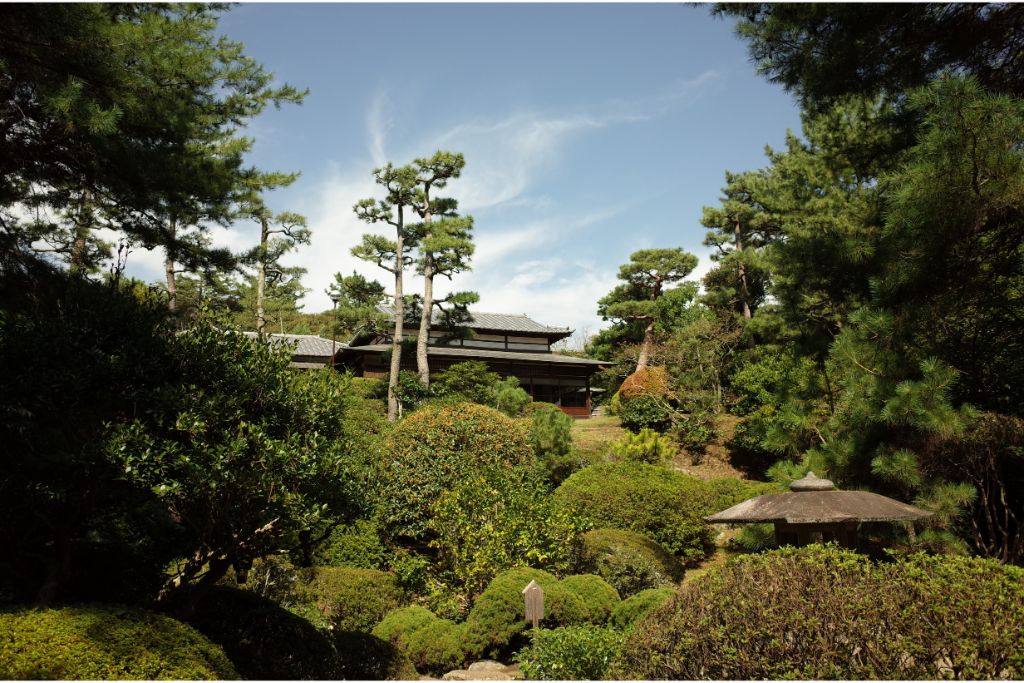
(Photo provided by the Oiso Branch of the National Showa Memorial Park Office)
Mutsu Munemitsu (1844-1897) served as Minister of Foreign Affairs in the second Ito Hirobumi cabinet, and worked hard to revise the unequal treaties.
Mutsu Munemitsu Villa Site and Former Furukawa Villa Japanese-style room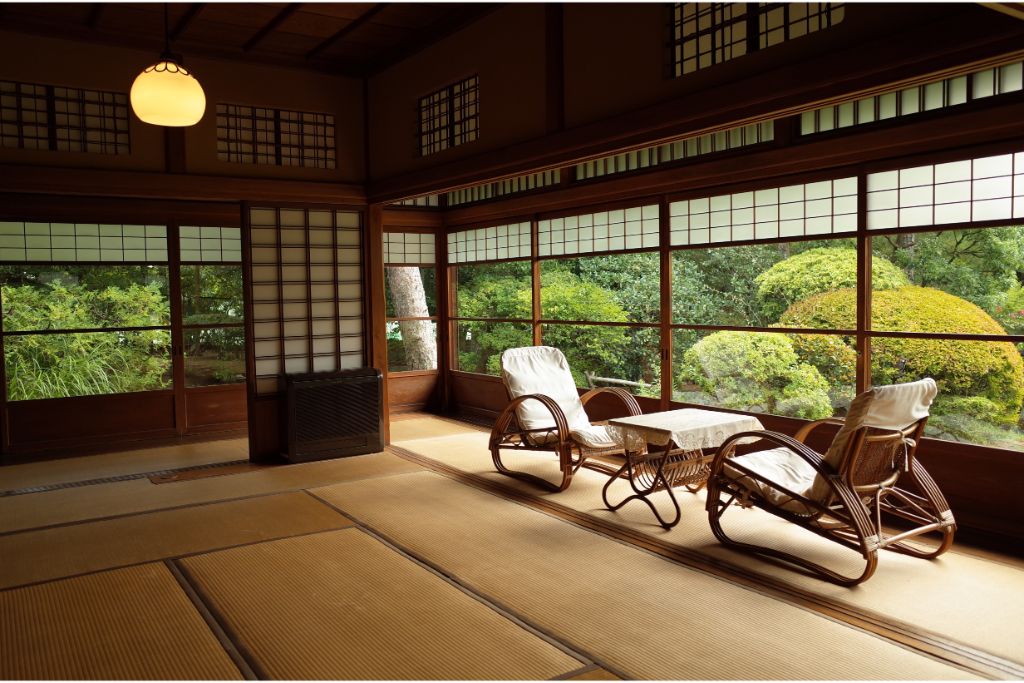
(Photo provided by the Oiso Branch of the National Showa Memorial Park Office)
*The former Mutsu residence was a villa for medical treatment. After the death of Mutsu Munemitsu, it became the villa of the Furukawa family, who adopted his second son (Junkichi). After it was partially destroyed in the Great East Japan Earthquake, it was renovated by the Furukawa family, and the renovated villa has been managed to this day.
[Meiji Memorial Oiso Garden]
Address: 85 Nishikoiso, Oiso-cho, Naka-gun, Kanagawa Prefecture, etc.
TEL: 0463-79-8700 (Oiso Branch Office of the National Showa Memorial Park)
5. Remembering the achievements of Hakushu Kitahara, a poet who wrote many children's songs
[Hakushu Children's Song Museum] (Odawara)
exterior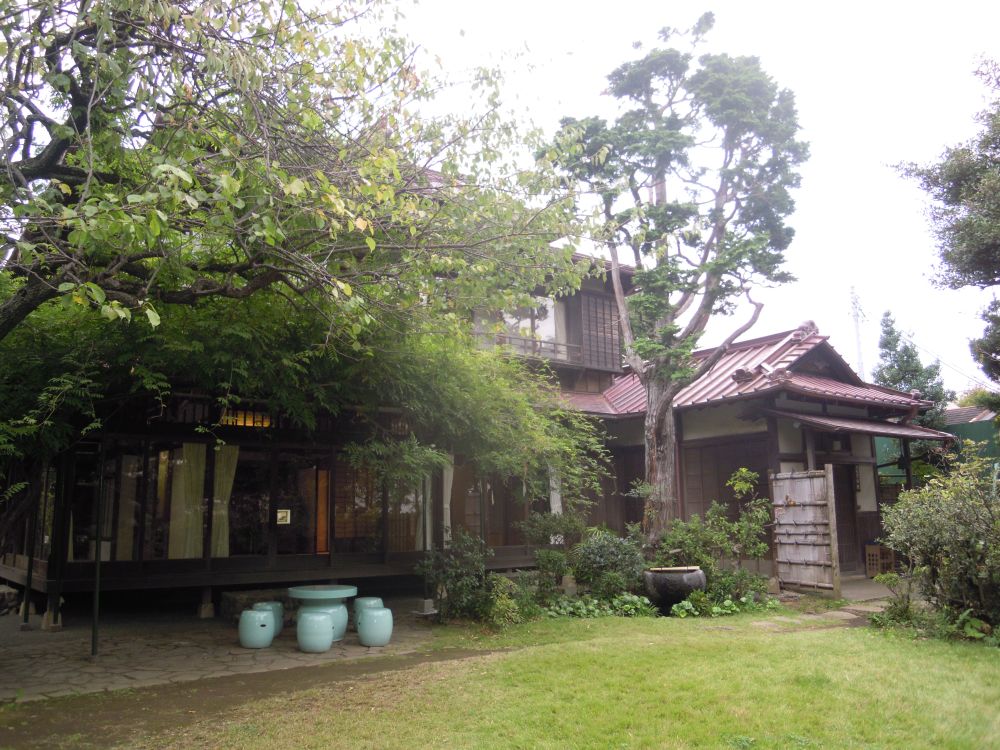 (Image provided by) Odawara City Kamome Library
(Image provided by) Odawara City Kamome Library
The Hakushu Children's Song Museum is a facility that commemorates the achievements of the poet Kitahara Hakushu (1885-1942), who is known for writing many children's songs, including "Karatachi no Hana," "Kono Michi," and "Machibouke." Hakushu moved to Odawara in 1918 at the age of 33, and spent eight years there until 1926.
The Hakushu Children's Song Museum is a villa built by former Minister of the Imperial Household, Count Tanaka Mitsuaki, around 1924, around the time that Kitahara Hakushu was living in Odawara. The impressive Japanese-style building features a light, tower-like design, and is designated as a national tangible cultural property.
Interior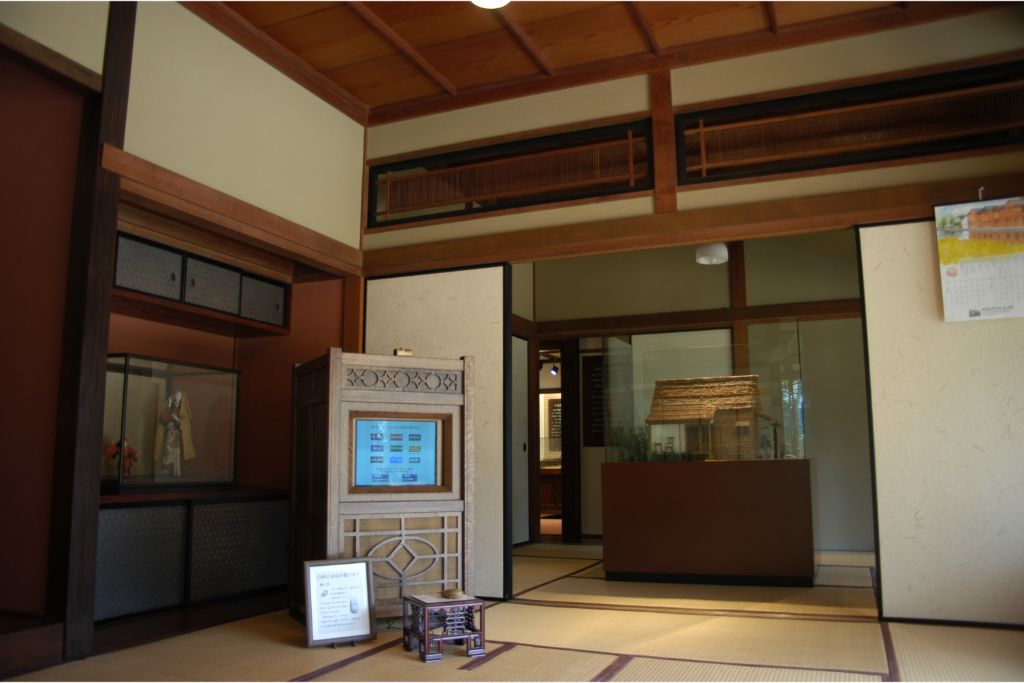
(Photo courtesy of Odawara City Kamome Library)
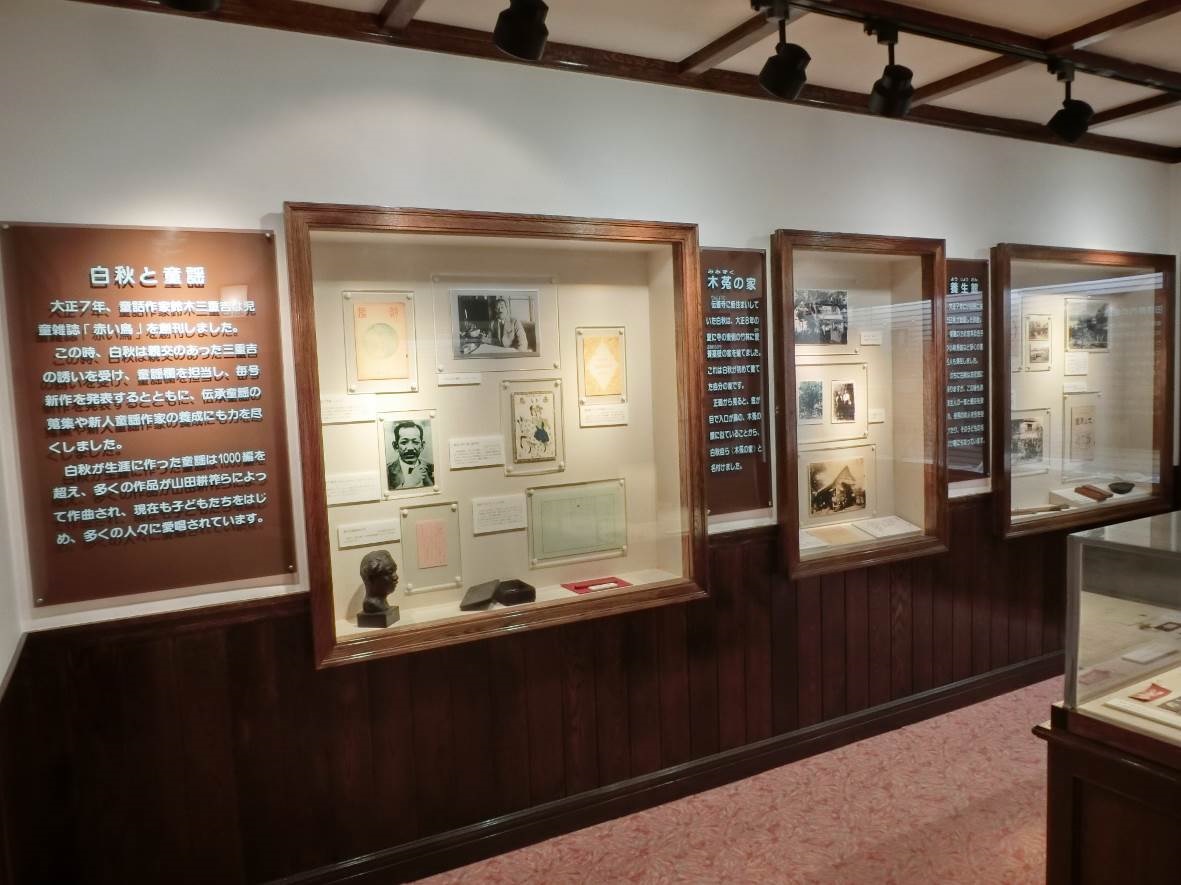 (Image provided by) Odawara City Kamome Library
(Image provided by) Odawara City Kamome LibraryIn addition to original nursery rhymes, the museum also has a section for Mother Goose, a traditional British nursery rhyme that was the first to be fully translated by Hakushu in Japan.
◎ A little episode ◎
Hakushu wrote in his commentary that his masterpiece, "Karatachi no Hana," was created on May 13, 1924, while he was living in Odawara, and that it was inspired by childhood memories and the karatachi flowers he saw on a mountain path near his home. Due to this anecdote, Odawara City erected a monument to the "Karatachi no Hana Path," and citizens planted karatachi trees.
[Hakushu Children's Song Museum (Odawara Literature Museum Annex)]
Address: 2-3-4 Minamimachi, Odawara City, Kanagawa Prefecture
Access: 20 minutes walk from the east exit of Odawara Station
TEL: 0465-22-9881 (Odawara Literature Museum)
Opening hours: 9:00-17:00 (entry until 16:30)
Admission fee: Same as Odawara Literature Museum
Adults: ¥250 (¥180 for groups of 20 or more)
Elementary and junior high school students: 100 yen (70 yen for groups of 20 or more)
<URL> http://www.city.odawara.kanagawa.jp/public-i/facilities/literature-museum/douyoukan.html
6. The hot spring inn where Natsume Soseki stayed for long periods
[Amano-ya (Main building) Currently the Yugawara Museum of Art] (Yugawara)
Amano-ya (New Wing)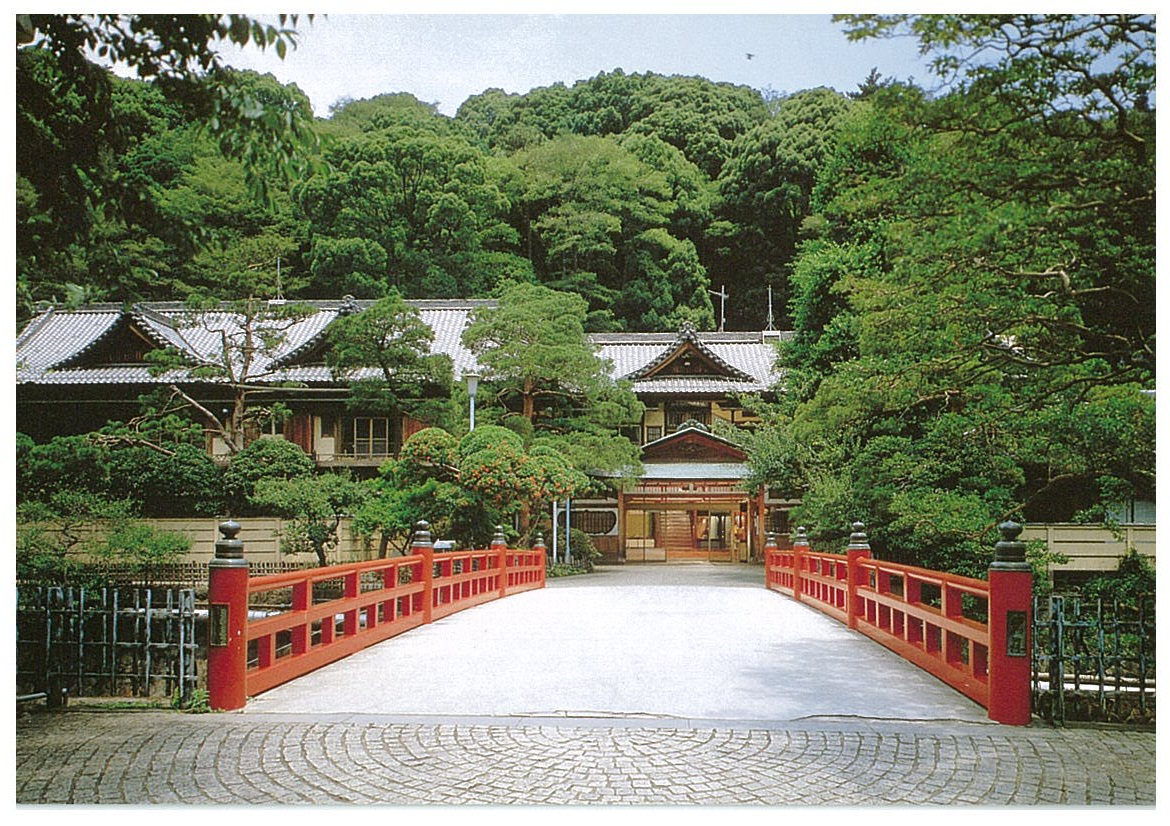 *The new building is currently closed and has been demolished and no longer exists (Image provided by Yugawara Museum of Art)
*The new building is currently closed and has been demolished and no longer exists (Image provided by Yugawara Museum of Art)
Amano-ya was founded in 1877. It was a long-established inn that represents Yugawara, and was frequented by famous people such as Ito Hirobumi and Natsume Soseki, and was even featured in Natsume Soseki's novel "Light and Darkness." However, the new building closed in 2005. The main building was renovated and opened as the "Yugawara Museum of Art" in 1998, and was renamed the "Yugawara Municipal Museum of Art" in 2006, and is still bustling with visitors today.
Yugawara Museum of Art (former Amano-ya main building)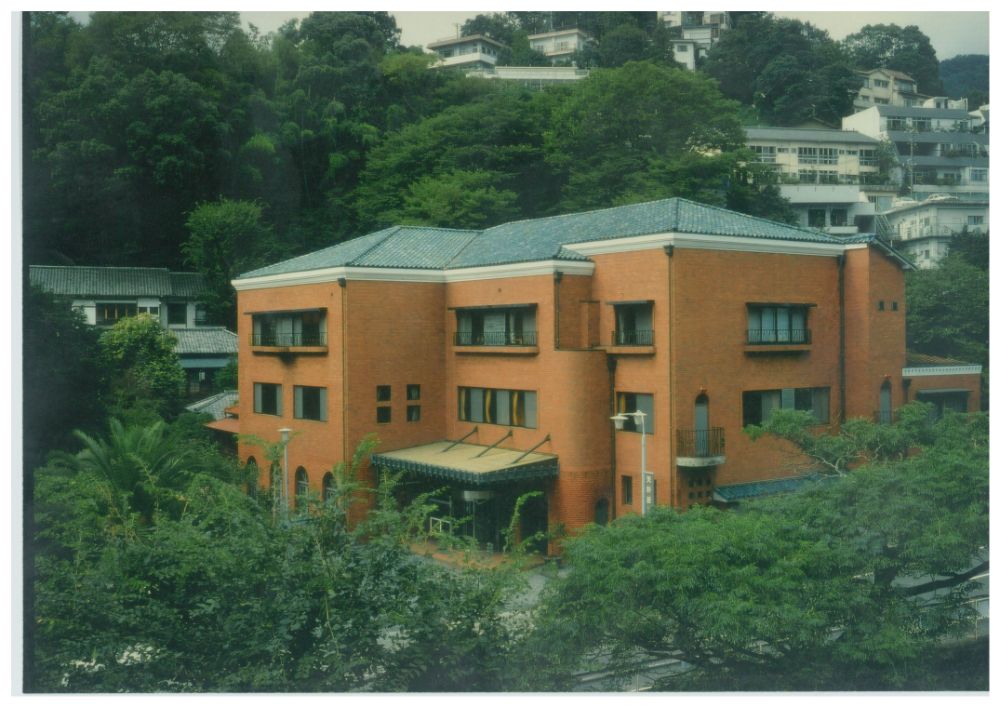 (Image provided by) Yugawara Museum of Art
(Image provided by) Yugawara Museum of Art
In 2006, the Hiramatsu Reiji Museum was opened to exhibit the works of Hiramatsu Reiji, a leading Japanese painter in the Japanese art world, and the museum was renamed the Yugawara Museum of Art along with the permanent exhibition hall to display the museum's collection. In 2017, the Hiramatsu Reiji Visible Atelier was opened, and the Japanese painter's studio is open to the public at all times.
The adjacent museum cafe "and garden" serves tofu and yuba dishes, and on the terrace you can enjoy a foot bath using hot spring water from Yugawara.
[Yugawara Museum of Art]
Address: 623-1 Miyagami, Yugawara-cho, Ashigarashimo-gun, Kanagawa Prefecture
TEL: 0465-63-7788
Opening hours: 9:00-16:30 (entry until 16:00)
Closed: Every Wednesday (open on national holidays), December 28th to 31st, and temporary closures such as when changing exhibits
Admission fee: Adults ¥600 (¥500), Elementary and junior high school students ¥300 (¥200)
*( ) indicates a group of 15 or more people. *Free for those with a disability certificate. Town residents receive a discount.
Writers and painters who loved Yugawara visited here!
{7} Writers and artists who loved Yugawara visited here!
[Manyo Park] (Yugawara)
Autumn leaves at Manyo Park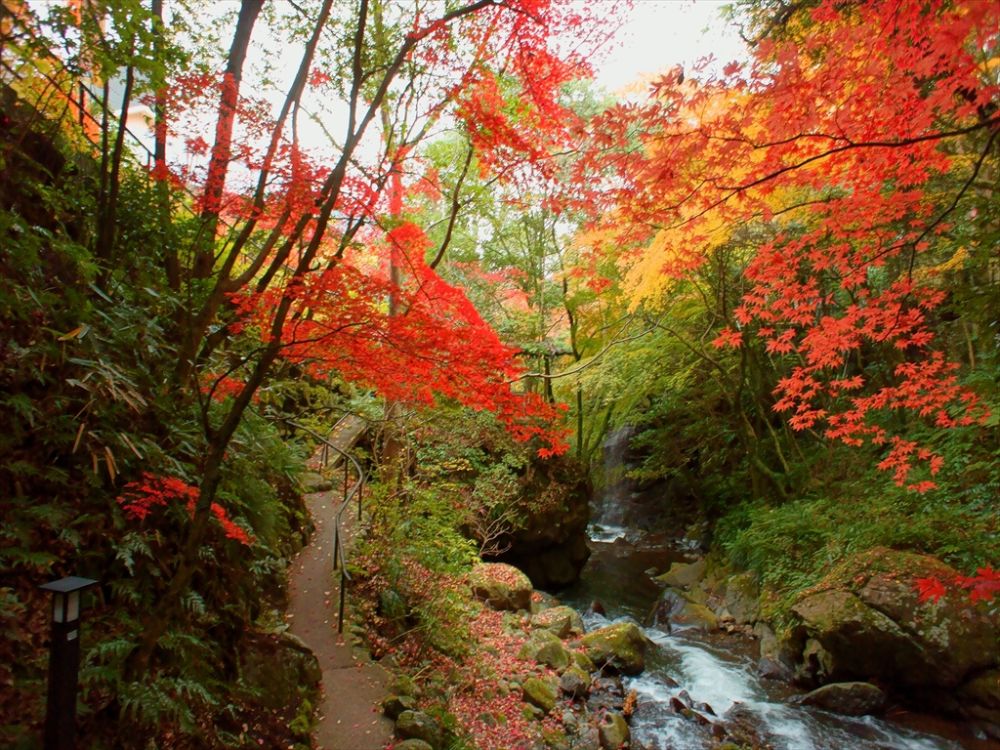 (Photo provided by) Yugawara Onsen Tourism Association
(Photo provided by) Yugawara Onsen Tourism Association
Manyo Park was chosen as one of the "Top 100 Historical Parks in Japan." Within the park, there are plants and flowers that appear in the Manyoshu, an anthology of poems about Yugawara Onsen.
Manyo Park may have been visited by many famous people who loved the city of Yugawara, including Natsume Soseki, Ryunosuke Akutagawa, Doppo Kunikida, Junichiro Tanizaki, and Akiko Yosano. I feel like a great inspiration will come to you while you are strolling around!
◎Origin of the park name◎
"The hot springs of Toi-kawachi in Ashigara are so beautiful that even children can't help but speak."
(The morning sun rises on the edge of the mountain, and I cannot help but roll about in the night.)
※Manyoshu, Volume 14, Toka, Song of 3368
The steam from the hot springs gushing out from the banks of the Toi River in Ashigara sways and floats in the air, unsteady, and the girl never says that their relationship is unreliable (it can't be helped that it is unreliable). I read about the feelings of a man who is so in love that he is overcome with anxiety.
*Toi is the former name of the Yugawara area.
This poem is the only one among the 4,500 poems in the Manyoshu that describes the sight of hot springs gushing forth merrily, and is known as "The Song of Ashikari Toi" and describes Yugawara Hot Springs.
The original text on this monument was written by Takeuchi Seiho. (The original text is on display at the Yugawara Museum of Art.) In connection with this poem, around 1952, a scholar of waka poetry living in Atami, Dr. Sasaki Nobutsuna, suggested that local people "create a Manyo Park in Yugawara," and with the doctor's guidance and advice, the local people built the current Manyo Park.
[Manyo Park]
Address: 566 Miyagami, Yugawara-cho, Ashigarashimo-gun, Kanagawa Prefecture
TEL: 0465-63-2111 (Yugawara Town Tourism Division)
Opening hours, admission fees, and closed days: Free entry, open all year round
<URL> https://www.yugawara.or.jp/sightseeing/722/
*Due to park renovation work beginning on April 1, 2020, the park and Yugawara Tourist Hall will be unavailable for one year.
8. Many works by famous authors with ties to Kamakura on display
[Kamakura Museum of Literature] (Kamakura)
exterior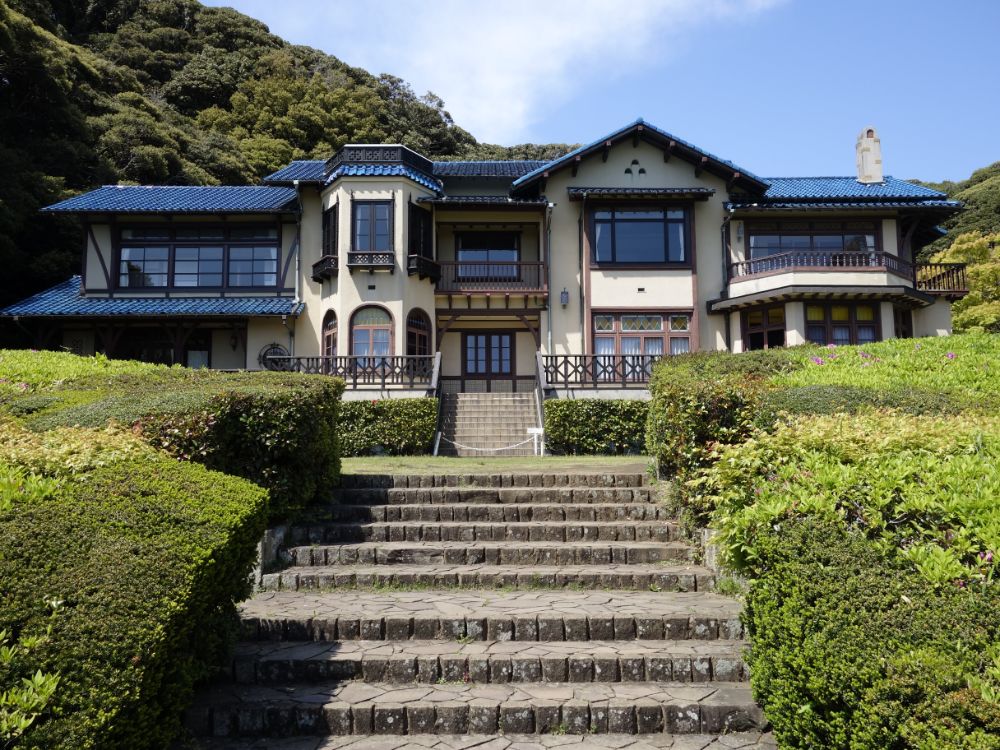 (Image provided by) Kamakura Museum of Literature
(Image provided by) Kamakura Museum of Literature
The Kamakura Museum of Literature was built in 1936 as a Western-style villa belonging to the former Marquis Maeda family, the descendants of the feudal lords of the Kaga Domain, which had a fiefdom of one million koku of rice. The city of Kamakura acquired the building, renovated and remodeled it, and opened it in November 1985. In May 2000, it was registered as a national tangible cultural property. Inside the museum, handwritten manuscripts and letters by Kamakura writers Kawabata Yasunari and Takami Jun, as well as other literary figures connected to the area, such as Natsume Soseki and Akutagawa Ryunosuke, are on display.
Permanent exhibition room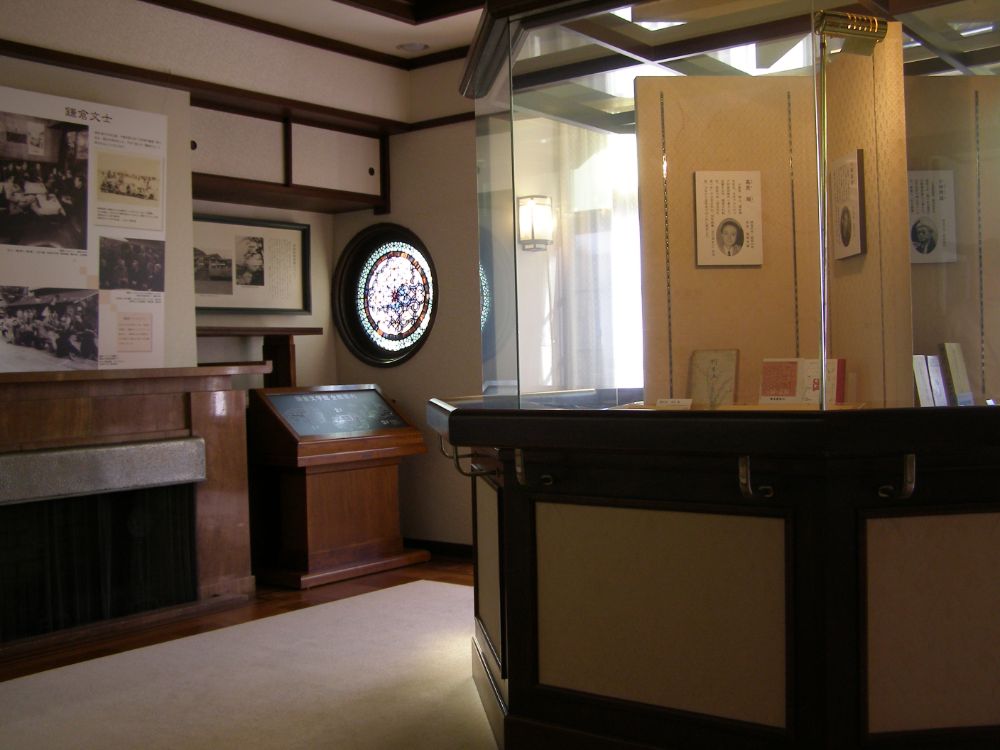 (Image provided by) Kamakura Museum of Literature
(Image provided by) Kamakura Museum of Literature
Terrace seating outside the lounge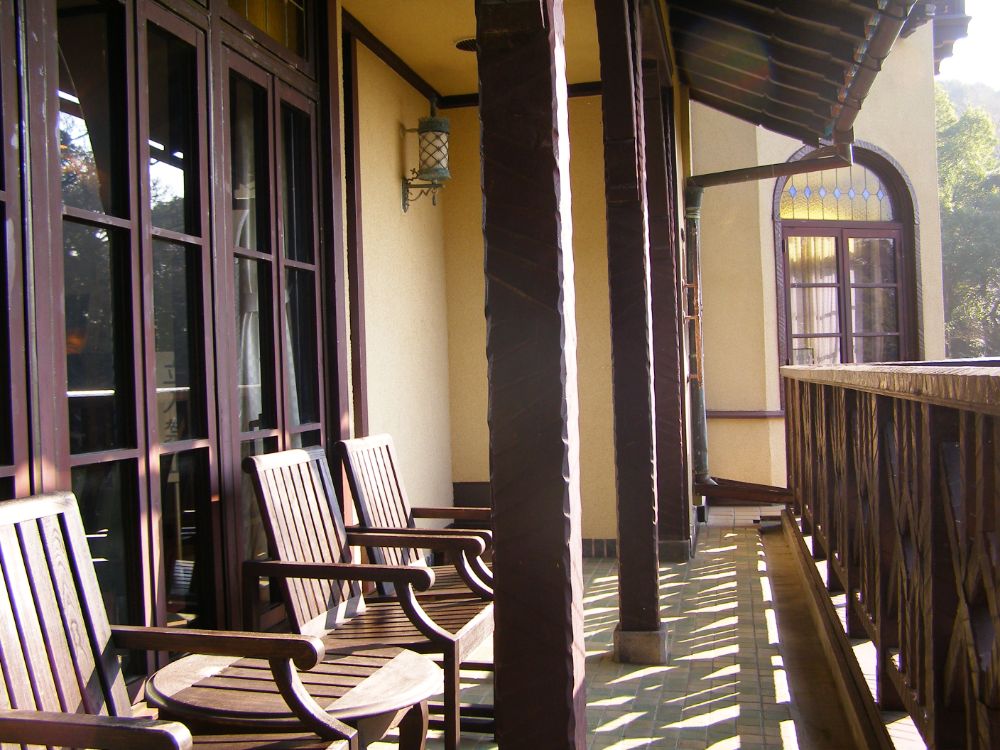 (Image provided by) Kamakura Museum of Literature
(Image provided by) Kamakura Museum of Literature
On a clear day, you can apparently see Oshima!
Rose Garden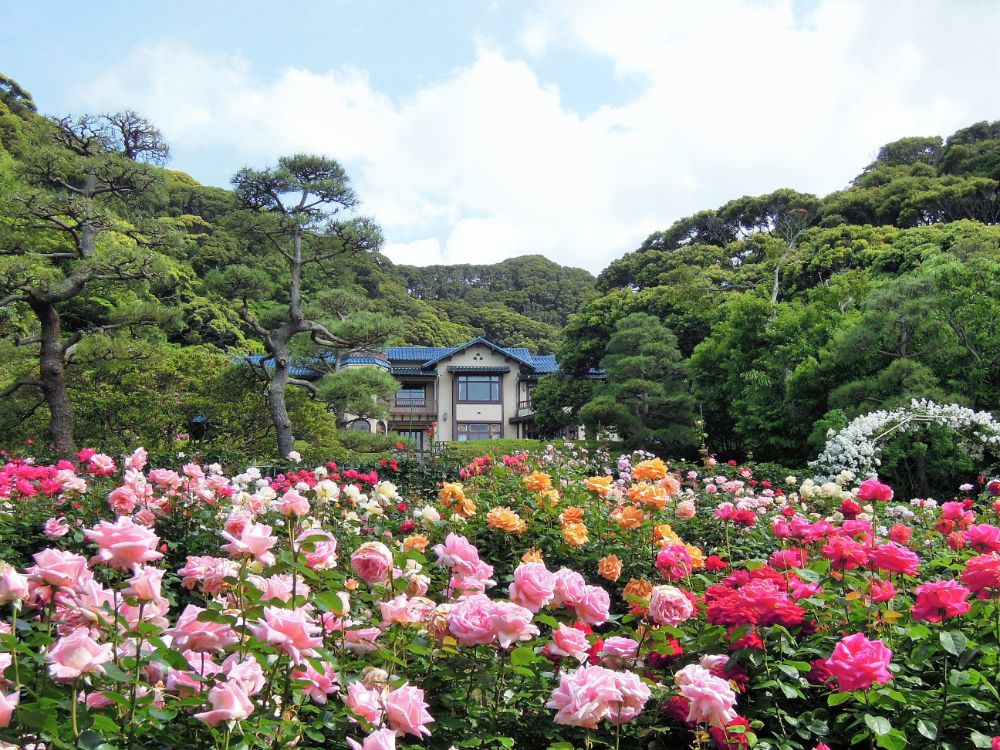 (Image provided by) Kamakura Museum of Literature
(Image provided by) Kamakura Museum of Literature
The rose garden on the south side of the garden has about 250 roses of 200 varieties, and events are held in conjunction with the best viewing times in spring and autumn. The garden also has a wonderful view overlooking Yuigahama Beach.
[Kamakura Museum of Literature]
Address: 1-5-3 Hase, Kamakura City, Kanagawa Prefecture
TEL: 0467-23-3911
Opening hours: 9:00-17:00 (March-September) / 9:00-16:30 (October-February)
*Last admission 30 minutes before
Closed: Mondays (open on national holidays) *Closed during exhibition changeovers, special reorganization periods, etc.
Admission fee: Collection exhibition: 300 yen / Special exhibition: 300 to 500 yen (varies depending on the exhibition)
<URL> http://www.kamakurabungaku.com/
Bonus: These famous people are also in Kanagawa!!
9. Still open today! A long-established restaurant with ties to Oryo, the wife of Ryoma Sakamoto
[Tanaka Family] (Kanagawa Ward, Yokohama)
exterior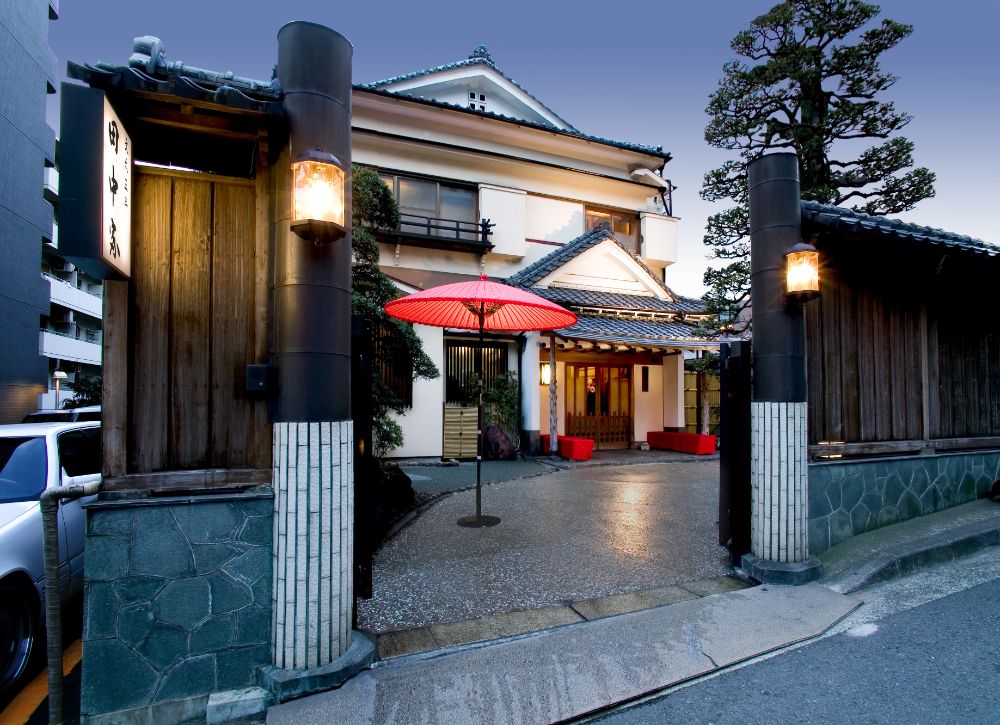 (Image provided by) Tanaka family
(Image provided by) Tanaka family
Tanakaya was founded in Bunkyu 3 (1863). As it was located near the port of opening, Takasugi Shinsaku of the Choshu clan patronized the restaurant, and there is an anecdote that he and Ito Hirobumi and Saigo Takamori plotted to overthrow the shogunate. In addition, Oryo, the wife of Sakamoto Ryoma, a patriot of the late Edo period, worked as a live-in waitress there for two or three years in her 30s, after being introduced by Katsu Kaishu.
The museum also has a collection of items related to Natsume Soseki, including his writings.
The predecessor of this store was "Sakuraya," which was also depicted in the ukiyo-e of "Fifty-three Stations of the Tokaido: Kanagawa" by Utagawa Hiroshige.
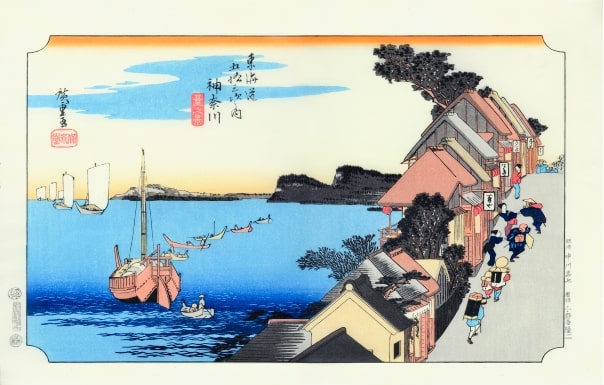
(Image provided by) Tanaka family
Sakuraya is the third shop up the hill in the image.
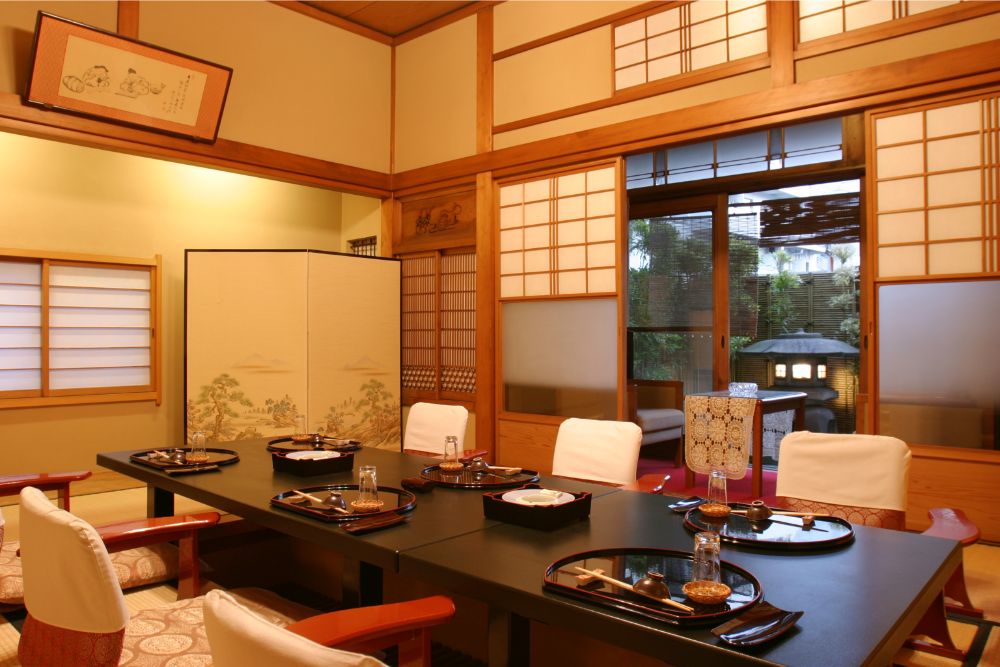 (Image provided by) Tanaka family
(Image provided by) Tanaka familyWhy not come and enjoy the Edo atmosphere and cuisine?
[Tanaka family]
Address: 11-1 Daimachi, Kanagawa-ku, Yokohama-shi, Kanagawa Prefecture (7 minutes walk from the west exit of JR Yokohama Station)
TEL: 045-311-2621
<URL> https://www.tanakaya1863.co.jp/
